DeadlyLabs bringing STEM to remote Australian communities P25


DeadlyLabs bringing STEM to remote Australian communities P25

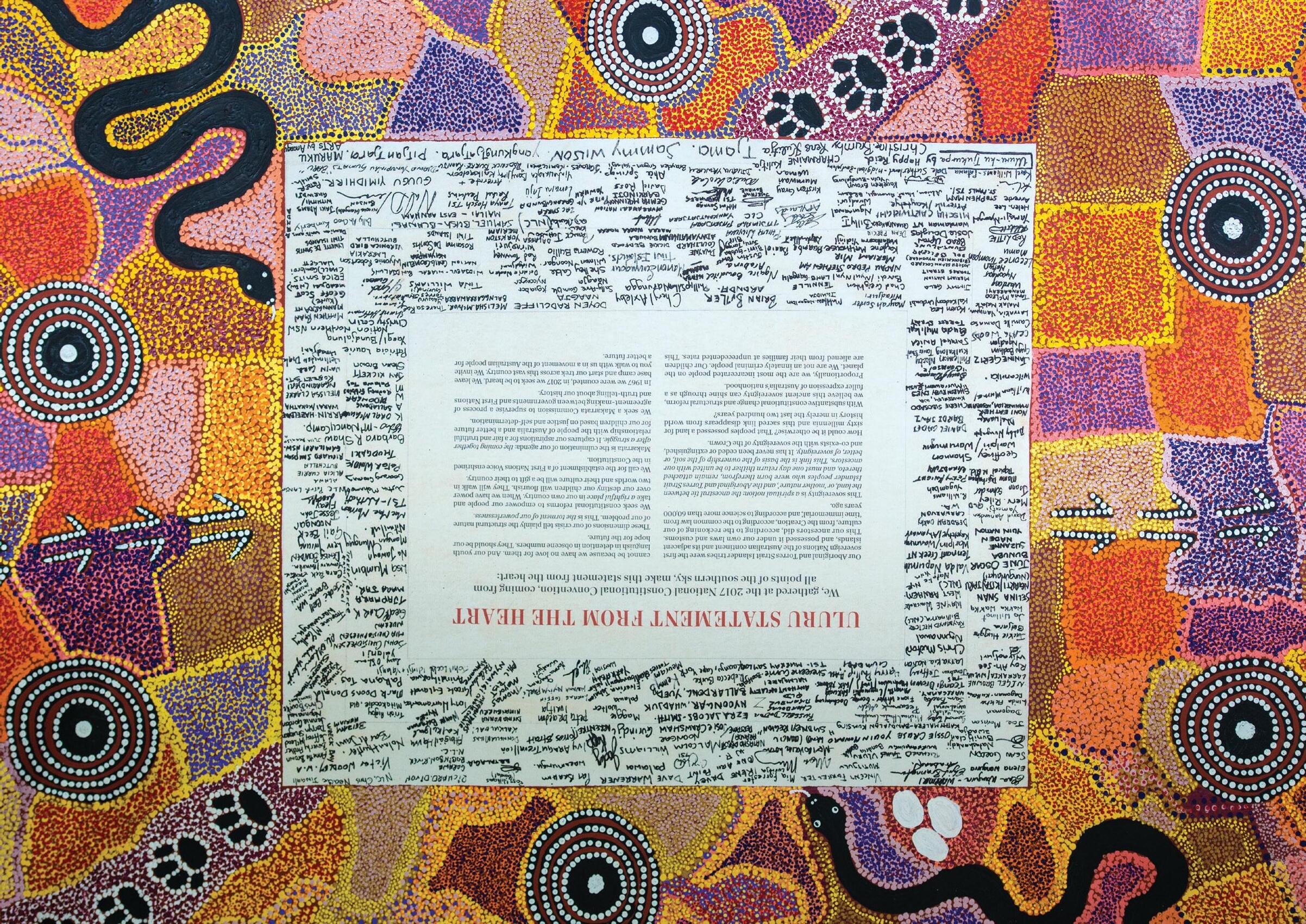

Our Aboriginal and Torres Strait Islander tribes were the first sovereign Nations of the Australian continent and its adjacent islands, and possessed it under our own laws and customs. This our ancestors did, according to the reckoning of our culture, from the Creation, according to the common law from ‘time immemorial’, and according to science more than 60,000 years ago.
This sovereignty is a spiritual notion: the ancestral tie between the land, or ‘mother nature’, and the Aboriginal and Torres Strait Islander peoples who were born therefrom, remain attached thereto, and must one day return thither to be united with our ancestors. This link is the basis of the ownership of the soil, or better, of sovereignty. It has never been ceded or extinguished, and co-exists with the sovereignty of the Crown.
How could it be otherwise? That peoples possessed a land for sixty millennia and this sacred link disappears from world history in merely the last two hundred years?
With substantive constitutional change and structural reform, we believe this ancient sovereignty can shine through as a fuller expression of Australia’s nationhood.
Proportionally, we are the most incarcerated people on the planet. We are not an innately criminal people. Our children are aliened from their families at unprecedented rates. This cannot be because we have no love for them. And our youth languish in detention in obscene numbers. They should be our hope for the future.

These dimensions of our crisis tell plainly the structural nature of our problem. This is the torment of our powerlessness. We seek constitutional reforms to empower our people and take a rightful place in our own country. When we have power over our destiny our children will flourish. They will walk in two worlds and their culture will be a gift to their country.
We call for the establishment of a First Nations Voice enshrined in the Constitution.
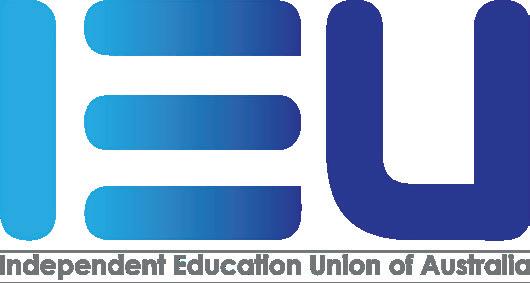
Makarrata is the culmination of our agenda: the coming together after a struggle. It captures our aspirations for a fair and truthful relationship with the people of Australia and a better future for our children based on justice and self-determination.
We seek a Makarrata Commission to supervise a process of agreement-making between governments and First Nations and truth-telling about our history.
In 1967 we were counted, in 2017 we seek to be heard. We leave base camp and start our trek across this vast country. We invite you to walk with us in a movement of the Australian people for a better future.
Endorsed by:





issue 3 | Vol 53 | 2023
Terry Burke
David Brear
Mark Northam
Managing Editor
Sue Osborne
Editorial Committee
Will Brodie
Emily Campbell
Katie Fotheringham
Sue Osborne
Journalists
Will Brodie
Emily Campbell
Katie Fotheringham
Sue Osborne
About us
IE is the professional journal of the Independent Education Union of Australia. It is published for members and subscribers and has a circulation of approximately 70,000. The contents of this journal do not necessarily reflect the views of the IEU or the editors nor imply endorsement by them.
IE online www.ieu.asn.au/publications/
Contributions
Contributions from members are welcome. Printing does not reflect endorsement and contributions may be edited at the editor’s discretion.
Email iemagazine@ieu.asn.au
Advertising
Chris Ruddle (02) 8202 8900 chrisr@ieu.asn.au

Advertising is carried in IE in order to minimise costs. Advertising does not in any way reflect endorsement of the products or services.
Subscriptions
IE is available free to members of IEU, or by subscription, contact Tania Yardley
tania@ieu.asn.au
(02) 8202 8900
Print Post Number 100007506
NSW and ACT Teachers
Reading this publication may count as PD. Professional reading can be included as part of your PD or PL for maintenance purposes. Remember to log your professional reading with NESA or TQI. For more information refer to NESA or TQI websites.
In our sector we often ask: How can we build education systems and schools which nurture excellence, fairness, and compassion? How do we create great cultures?
To achieve healthy cultures requires both big picture thinking about national policies and local action which enacts meaningful changes in workplaces.

Matt Cameron, the subject of our In Focus profile (p6), does both. He’s an ex-teacher who is now CEO of the National Rugby League’s champion club, where he’s built a connection to community while using serving teachers to mentor players.
This edition of IE does something similar – taking both a broad look at major issues and focusing on specific topics which affect education staff. Think of it as using both the telescope and the microscope.
Telescope: On page 14 we examine how history informs schools and unions. We also report how students are taking a renewed interest in history following the epochshaking pandemic (p16).
Our pieces on teacher representation on education authorities (p20), AI in education (p22), education reforms (p26) and what makes an effective school leader (p28) examine issues which will shape the future of education.
There is no bigger issue than our relationships with First Nations Australians. On page 30, we report on the development of the IEUA NSW/ ACT Reconciliation Action Plan (RAP).
Microscope: Our articles on learning difficulties and language disorders (p10 and p12), academic support for girls (p32) and teaching podcasts (p34) offer informative essentials on classroom practice.
In A Day in the Life (p9) we meet Narelle Ryall, a teachers aide in an Aspect Autism school.
We trust this mixture of big ideas and practical information is as stimulating to read as it was to compile, and that your school’s culture is informed by the macro and the micro.
David Brear SecretaryEarly childhood teachers have the same qualifications as school teachers, yet some are paid $30,000 a year less.
The Federal Government’s Secure Work Better Jobs Act, introduced in June, offers a new way of bargaining that might improve the pay and conditions of early childhood teachers.
The legislation allows unions to bargain for enterprise agreements with groups of employers.
The IEUA NSW/ACT Branch, along with the United Workers Union (UWU), which represents ECEC educators in NSW, and the Australian Education Union (AEU), which represents ECEC teachers in Victoria, jointly lodged a supported bargaining application at the Fair Work Commission in August.
A group of 64 NSW employers has agreed to be part of the application. The IEU is exploring opportunities in other parts of NSW where there are groups of early childhood teachers that would benefit from being part of a multi-enterprise agreement.
IEU members in Tasmanian Catholic schools are frustrated at the slow pace of negotiations towards their new agreement.
The union encouraged members to contact the Catholic Education Tasmania (CET) bargaining team, and forward their messages to the union.
The result was thousands of words about teacher shortages, pay inequities and conditions not matching government schools.
“It is not justifiable for teachers in the Catholic sector to be underpaid and therefore undervalued,” wrote one member.
“Every school is feeling the pain of not having enough teachers to cover classes. It is self-sabotage to think people are going to continue to work if they are undervalued. Teachers’ goodwill has diminished, and people are feeling burnt out.”
Other issues of concern raised by CET claims included the forced transfer of staff between schools, an increase in the number of days that teachers can be required to work, a reduction in the scope of consultative committees and extending the period of notice required on resignation.
Victoria
The new deal covering most Victorian Catholic schools has seen IEU organisers visiting schools across the state, reinforcing how the ‘workload agreement’ can help its members.
Consultation has focused on time in lieu and the 30+8 workload regulation model, both new ideas to the sector. Organisers report that schools with a culture of cooperation are faring best, which underlines the importance of consultative committees in the new regime.
Consultative committees are representative of staff needs. A formal recommendation can be made by three members of a six-member consultative committee – and if it is rejected, reasons must be provided in writing. This deals with the ‘deadlock’ situation in which the three employer representatives could veto a position put forward by union and staff representatives.
The union has communicated lesser-known benefits of the agreement via a series of member-only emails. These have highlighted everything from support staff re-classifications to meeting limits, flexible leave, reductions in scheduled class times, improved leave provisions and the minimisation of the spread of hours worked by part-time employees.
The union expects this combination of targeted communications and traditional face-to-face meetings with organisers to change the work culture at most schools, because those which embrace the new model will run more efficiently.
Haileybury Rendall members seek competitive rates of pay
IEU members at Haileybury Rendall School in Darwin are looking for equitable pay rates as collective negotiations commence.
NT Organiser Jengis Osman said securing competitive wages was key for IEU members, who want to ensure staff are remunerated in line with other schools in the NT.
“Haileybury Rendall teacher salaries lag behind NT public sector and non-government education sector rates,” Jengis said.
“The school needs teacher wages to remain competitive with NT market rates because teachers can find higher remunerated work elsewhere in Darwin.”
Haileybury Rendall was formed after a Melbourne-based school employer purchased the old Kormilda College in 2018.
Jengis said IEU members previously employed by Kormilda College fought for two years to achieve the first collective agreement under the new school management in 2020.
“The new employer had shamefully tried to terminate the collective agreement conditions it inherited, attempting to introduce a diminution of working conditions, including unpaid extra-curricular activity on weekends,” Jengis said.
“After a long fight and considerable tenacity, our members successfully achieved a collective agreement which enhanced conditions, including paid extra-curricular activity,” he said.
QuEST online provides new PD opportunities for members
IEU-QNT members now have access to a suite of new professional development (PD) opportunities through the QuEST platform, expanding the range of member-exclusive benefits.
The Queensland Education Support and Training (QuEST) program, delivered in partnership with the Queensland Teachers’ Union (QTU), provides quality professional development opportunities for teachers and school leaders.

QuEST offers a mix of live and on-demand online courses ranging from hour-long to all-day programs, which are presented by teachers from across Australia.
Our union subsidises the course costs for members, while Highly Accomplished and Lead Teacher (HALT) training is available to members free of charge.
As QuEST is an accredited training provider, members can seek funding for courses from their school as part of their PD plan.
Participants of all QuEST sessions receive a certificate of attendance, which can assist in meeting compulsory professional development (CPD) requirements for registration purposes.
The program is available to all IEU-QNT members. Members should select ‘other union – IEU’ during the registration process. Members can find a full schedule of QuEST courses for 2023 and registration details online at www.qtu.asn.au/QuEST
In July, the WA Branch lodged an application in the Fair Work Commission for a “single interest employer authorisation,” of bargaining for support staff employed in 163 Catholic schools across Western Australia. Before changes to the Fair Work Act in June, only employers could make these applications.
Catholic employers were reluctant to bargain for support staff, wanting to deal with teachers first. The moment the law changed to allow us to right this wrong, the IEU did so, making this the first application of its kind in Australia.
After two years, 22 bargaining meetings, 14 draft agreements, two no votes and over 50 claims rejected by Catholic employers, the IEU lodged a bargaining dispute in the Fair Work Commission seeking assistance to break the deadlock. Both parties have agreed to participate in Commission-assisted bargaining.
Both matters are ongoing, but the IEU stands ready to take the action required to improve the working lives of our members.
Bargaining for the 11 Anglican Schools Commission schools has also just commenced.
Enterprise bargaining in the Lutheran sector and a significant number of independent schools — including some large campuses — are at various stages of progress, but as expected, teacher workload, support staff classification and pay increases are major bargaining points.
News from NSW that public school staff (and by binding agreement, staff in NSW Catholic dioceses) will receive unprecedented pay increases in response to collective action by NSW union members has ramifications in SA. This pay outcome gives strong argument for meaningful pay increases in the SA public school sector, and like NSW, the SA Catholic sector is also aligned with these pay increases.
Preparations for the impending Catholic enterprise agreement (EA) negotiations in 2024 are underway with regular strategy and planning meetings.
One key focus brought to the attention of SA members in Catholic schools is the win by Victorian IEU members for greatly reduced Student Contact Time (SCT) through their ‘30+8’ model for teacher workload.
This means SA Catholic teachers are completing four hours extra of SCT per week, totaling 160 extra hours of work per year. This makes for a strong collective bargaining point if members want change.

Rugby coaches can learn a lot from classroom teachers, says Matt Cameron, Penrith Panthers Rugby League CEO. The former Catholic school teacher spoke to Sue Osborne about the teachers who have helped his coaches relate to their players (and lead a team to back-to-back premiership titles in 2021-22).
As a child, Cameron attended Patrician Brothers Blacktown (St Pat’s) in western Sydney – a school with strong links to rugby league. However, inspiration came not from sport, but a Technological & Applied Studies (TAS) teacher at the school. So Matt studied at Sydney Teachers College before beginning a career as a TAS teacher at his alma mater in 1991, where he stayed until 2006.
While at St Pat’s he volunteered as strapper for the boys’ rugby league games and over time graduated to coach. A colleague had a connection at the professional Parramatta Eels Rugby League Club and a position opened for someone to get involved with the lower grades after school and Matt’s name was put forward.
“I was strapping and assessing injured players, things like that. If that job had not come up, I’d probably still be teaching now,” Matt said.
In 2006 he was coaching reserve grade for the Eels part time and still teaching. Then Eels Head Coach Brian Smith left, and a full-time position opened up and Matt jumped at it. He took long service leave from school, but he needn’t have bothered, as he’s never looked back since.
In 2012 the general manager of footy at the Eels was contacted by Phil Gould who had just taken over as General Manager of Football at Panthers and was looking to instil a new culture at the club and needed someone to coordinate the coaching side of things. Matt took the position.
“They were looking to try something different. The role was more administrative. I still went to work in shorts and runners, but it was more about putting systems into place to future proof the club, to ensure that there was a pathway for players to go through the system and become first grade players,” Matt said.
Panthers is lucky in that it has a huge talent pool to draw on in western Sydney. Close connections with schools and the community are key to accessing the vast resource of players on its doorstep.
Matt said he used his system-orientated skills as a TAS teacher to approach the coaching regime at Panthers.
“In Technology and Applied Studies, if you’re going to build a breadbox, there’s a sequence, so I drew on that experience, and we put some sequences in place on how we are going to develop those young men. Looking to our local schools to find teachers to act as role models, to come into the club and help us out, that was one sequence.
“The boys start training at 5.30pm, so it’s easy to get teachers to come in after school and help. A lot of teachers take for granted the skill set they have acquired. They are quick thinkers and can problem solve. I wanted to draw on those abilities.”
Using his connections from his Patrician Brothers days, Matt has organised for teachers from Sydney independent schools such as Knox Grammar School to come in and run sessions for his coaches on how to communicate with players.

For example, during video presentations, which are content heavy and analytical, how does a coach engage with 40 or 50 young players and get them asking questions and contributing comments?
“You might be critiquing someone’s performance on the field, which is a confronting thing in a public forum. Everyone just sits and doesn’t say anything. How do you get players comfortable contributing to that discussion?
“Classroom teachers are used to prising more information out of students, so they brought some of those techniques here to our coaches to use in these video sessions.”
The teachers from Knox also spent a day with the club, observing lecturers, watching coaching on the field, and providing feedback. In turn, Matt visited the college to give talks to the staff.
Traditionally the Panthers has a good relationship with local Catholic school such as St Dominic’s Kingswood, St Gregory’s Campbelltown, Patrician Brothers Fairfield and Patrician Brothers Blacktown. The Catholic Schools NSW Metropolitan Cup is a breeding ground for players.
But nowadays government sports high schools are providing healthy competition to the Catholic schools. Junior rugby league for both boys and girls is growing exponentially at the club, ensuring an ongoing talent pool. Many of the club’s current star players, such as Brian To’o, Dylan Edwards, Jarome Luai, Stephen Crichton, Nathan Cleary, Spencer Leniu and Lindsay Smith have been nurtured locally.
The Panthers deliver the ‘Adopt-aSchool’ program’ which is also aimed at creating a greater connection with the schools and clubs in the Penrith District.
Panthers players visit local schools and take an active role in assisting in sporting events and a variety of other school activities.
The Adopt-a-School program further expands relationships with schools receiving posters, stationery kits, sticker sheets and other items.
Developing a pathway for girls is a new challenge for the club. Girls’ junior teams already exist, but developing ties with girls’ schools similar to what already exist with boys’ schools is the next stage.
What the experts say League pundits have attributed much of the club’s recent success to its ability to nurture and retain young talent. But Matt said there’s more to it than that.
“There’s been a lot of people put a lot of effort into developing this club. If you
listen to the coach [Ivan Clearly] talking, he says he always wants the team to be a source of community pride, and I feel like we’re in that spot now.
“The current cohort of players are not just good, they are connected. They’ve all gone to school together, played junior league together. They’ve grown up together essentially.
“I think at one stage 22 of our 28 top players had debuted at the club. We connect back to the community and the club is a focal point.”
The Panthers League Cub itself is the biggest in the southern hemisphere and offers a range of restaurants and entertainment activities, such as cable skiing, as well as the obligatory poker machines.
After each home game, the players stay on the field for at least half an hour, interacting with the fans, taking selfies, signing autographs, giving away their gear at times.
Cameron runs a transition course at St Pat’s for boys moving into Year 11, talking to them about responsibility and expectations.
“We’re always looking for opportunities to get out and talk to schools. We’ve got a positive message from the football point of view.”
The Penrith Panthers Academy, a $22 million purpose-built facility completed in 2016, has the usual gym, spa pool and changing room, but also a large lecture theatre, video room, wellbeing centre and education room.
In the education department they can find support to obtain skills for life after rugby league. Qualifications acquired by current players range from carpentry to sports science, business and entrepreneurship degrees.
In the wellbeing room current players can talk to former players about anything that’s worrying them.
“There are only 80 minutes a week on the field, but 1000 minutes of other time and we have a responsibility to teach young men and women about how to conduct themselves off the field,” Matt said.
“The X and Ys of football is one thing, but the sustained period of success we’re having now, it’s around the player’s mental health, recovery levels, what he’s doing away from football in terms of training and education, all of that.”
The players are also exposed to several presentations from the National Rugby League (NRL) on respectful relationships, gambling, and other issues which builds on the club’s own work, Matt said.

“Whenever I show visitors around the Academy, they all say the same thing, ‘I had no idea so much other stuff went on the background, away from what you see on the news for 15 seconds every night.”
Matt said the changes he observes in players from just a little guidance reminds him how influential teachers can be on students’ lives.
“In the daily grind of teaching, you can lose sight sometimes of how much impact you can have on a student. I’ve seen how small things like signing an autograph for a child can change their outlook. It’s the same with teachers.
“Teaching TAS, an elective subject, you realise that you could have a big influence on a student’s future. I bumped into a guy recently that I taught 20 years ago. He’s running his own bricklaying business now, and I wondered if I had something to do with that. It was a nice moment.
“When I look back now at the Brothers that coached sport when I was at school, I realise the sacrifices they made. When I was in Year 11 and 12, I had no ambition to be a teacher at all, but my TAS teacher was the coolest guy I’d ever come across and I thought, ‘maybe I could be like him one day’.
“He was a big influence on my life, so I make a conscious effort to remember that you can change a person’s life in the blink of an eye.
“All teachers should take the time to stop and talk to a kid and find out how his day is going. It’s a challenge in the busy day to do that sometimes, but it’s worth it.
Panthers on the Prowl, the dedicated community arm of the Panthers Group, oversees a wide variety of community initiatives, including Building Young Men, a mentoring program focused on providing positive role models and making a lasting impression on local teenage boys.
“Football can be the smallest part of what we’re doing. It’s the community that’s the biggest part of it.
“I’m lucky here, I’ve only got 35 players to worry about, not 180 in different classes.”
Matt said he has regular catchups with his teacher connections to bounce ideas off them about his role at Panthers.
“I like to have dinner with those guys and see what’s going on in schools, see if someone’s doing something a little bit different. I’m still learning from teachers after all this time.”
“In the daily grind of teaching, you can lose sight sometimes of how much impact you have on a student.”Matt Cameron in his many guises – meeting with the solar suppliers for Panthers
“Self-regulation is also a big part of what we teach them, this skill helps them to identify the emotion they are feeling and how to respond appropriately, it also gives them strategies to use.
“While we are assisting in a mainstream class, we help the students stay on task, they may also become overstimulated by noise or the quantity of work which they have been asked to do.
“We are ensuring the safety of the child, watching out if there’s any bullying we might need to bring to the attention of the teacher, even out in the playground or on the buses.
Narelle works for Aspect Riverina School, part of an organisation which provides services for people with a diagnosis of autism.

Narelle’s day begins at 8.45am. She works at the Satellite Class at Xavier Catholic High School Albury, NSW. This class helps Aspect students transition into a mainstream setting.
The students are supported by Narelle, a teacher and another teachers aide. They support students but also each other and the broader school community.
Narelle’s association with students with autism began more than 20 years ago when she volunteered to help a boy with diagnosed autism at preschool. Since then, she’s honed her skills with professional work, mostly with Aspect.
In the morning the team checks if the students are in the homeroom. Some of the students will check in with the team prior to homeroom, when they are collecting their laptops.
“It’s important to acknowledge our students by name. This helps them to feel and know that they are seen,” Narelle said.
The team and students follow what is on the whiteboard as this tells everyone where they need to be and what they need to be doing.
“We don’t just help our kids. We help all the students that need assistance; or we help the teacher deliver the program, even if it’s a mainstream teacher, because we’ve got our students in that class,” she said.
“We don’t teach them just the academics but all the social skills as we’re trying to prepare them for the wide world out there.
“How to know when someone’s joking or not, how to read expressions, what is expected from them, appropriate behaviour, etc.
“We’re just diligent in helping the child to be in the emotional state to learn. If they’re not, we don’t push them, we redirect them.”
During the morning break, whichever team member is on duty will ensure the children are safe and comfortable with who they are hanging out with.
At lunch Narelle swaps notes with her fellow teachers aide and teacher. It gives them an opportunity to build on their knowledge to improve their service for the students.
“We’re on the same page and that’s important to provide consistency. The students need to know what to expect. Sudden changes can cause meltdowns. Due to the strategies we use with change, our students are getting better with accepting it. It is maturity as well.
“If we feel that our students may not cope, we’ll keep them in our classroom. We don’t want to put them into a situation where they may not have positive interactions or a successful lesson.”
In the afternoon Narelle is back in the classroom, or perhaps organising an art project or some photocopying. At the end of the day the team checks in with the students as they leave, to make sure it has been a successful day for them or if there are any concerns that the students may have.
Narelle has been a dedicated IEU member for at least 10 years and regularly attends the IEUA NSW/ACT Branch Council meetings.
She said she values her membership more than ever in the current climate of shortages, pressure, and uncertainty in the profession.
In this series we talk to IEU members about their diverse roles in education

Education staff are vital for spotting the learning difficulties and disorders facing students, Will Brodie writes.
They’re often the first to notice children struggling to master reading (which could be dyslexia) or maths (which could be dyscalculia).
However, the signs are often not obvious and the expectation that overworked teachers and support staff should have the expertise to diagnose such important conditions is problematic.
In July, an article in the Herald Sun opened: ‘Children are being ‘let down’ by teachers unable to recognise the early signs of learning disorders’.
Far from letting kids down, teachers are carrying an outsized burden of recognising learning difficulties, and teacher shortages only exacerbate the problem.
Staff shortages “most affected students with disabilities, including those with learning disorders”, The Age reported in August 2022.
RMIT senior lecturer in special education David Armstrong said schools struggling to deliver the basic curriculum and “scrambling every morning to fill their staffing needs” were less likely to have the resources, time, and energy to support students with additional needs.
This is why the IEUA has insisted that any new initiative or project which adds to teacher responsibilities be subject to a Teacher Workload Impact Assessment (TWIA).
The IEUA policy states: “Unless a proposal is neutral in terms of workload impacts, or includes confirmed workload offsets, it should not proceed.”
And experts are required for diagnoses of serious conditions.
“In reality, such specialist responsibilities are often added to already overloaded classroom teachers or leadership positions who are not necessarily equipped or able to provide such support.”
The IEUA called for “targeted funding to improve access to allied health and wellbeing support”.
Thankfully, there are basic signs of possible difficulties which can help teachers identify students who can then be tested by experts.
Diagnosing dyscalculia Dyscalculia is a condition which hinders the ability to acquire arithmetical skills and understand numbers, affecting around 6% of children in primary schools – around the same number estimated to have dyslexia.
Associate Professor Dr Judi Humberstone, a former Victorian Department of Education school principal with 23 years’ experience of teaching maths at the secondary level, jointly set up the dyscalculia component of the Psychology Clinic at the University of Melbourne. Dr Humberstone also runs dyscalculia webinars through the Learning Hub for IEUA members.
She says simple indicators for dyscalculia include:
• an inability to tell analogue time
• being able to solve a mathematical problem successfully one day but not knowing how the following day
• not recognising when two problems are analogous, and the same solution approach can be used for both
• struggling to learn the times tables despite conscientious attempts.
More specific tests ask students to identify the number of dots in a visual array or to repeat increasingly long strings of numbers, then repeat the numbers in reverse order.
“The dyscalculia screener requires a registered psychologist to administer it, but the tests above can provide some suggestion of dyscalculia and the student should then be referred for more detailed testing by a qualified psychologist.
“I think that dyscalculic children are quite obvious when you know the sorts of things – referenced above – to look for.”
‘Knowing what to look for’ is crucial because alarming numbers of children have issues. NAPLAN results show nearly 30% per of school children are struggling to meet literacy and numeracy proficiencies, and Learning Disabilities Australia says 10–16% of students are “perceived by their teachers to have learning difficulties and support needs”.
What are learning difficulties and learning disorders?
Learning difficulties are problems with reading, writing and/or maths.
Learning disorders are specific, serious, and ongoing problems with reading, writing and/or maths, diagnosed by health professionals. Dyslexia and dyscalculia are examples of learning disorders.
A specific learning disability (SpLD) is the result of a neurological (rather than psychological) disorder which causes the learner to receive and process some information inaccurately. They can have significant impact on education and learning and on the acquisition of literacy skills.
Learning difficulties and early signs of learning disorders are often detected in the first two years of school, when children start classroom-based learning in reading, writing and maths.
A school-age child with learning difficulties or a learning disorder, might:
• dislike reading, writing or maths and/ or find reading, writing or maths hard
• have a lot of trouble spelling common words, using rhyming words or counting
• find it hard to spot the sounds and syllables in words – for example, the ‘k’ sound in monkey
• find it hard to link a number to the associated word – for example, ‘5’ and ‘five’, and
• not feel confident about schoolwork.
Parents who feel their child has done additional programs at school but still seems to be struggling with reading, writing, or maths can ask their school to arrange a formal assessment for learning disorders by a psychologist or paediatrician.
A full cognitive and educational assessment provides a learning profile identifying strengths and challenges, which is necessary to improve the student’s learning outcomes.

Some clues to working out that a student has a specific learning disability include:
• unusual and inconsistent spellings
• reversals or transpositions of letters in words, or numbers in figures, formulae, dates, and symbols (such as in mathematics or music) omission of parts of words or sentences, or
• omission of auxiliary verbs, pronouns, and prepositions, and
• lack of proper order or demonstrated sequence in writing, mathematical calculations, or music notation.
“Kids with LDs often have a big gap between what it seems like they should be able to do and what they do. For example, a student who writes awesome essays but can barely do basic math assignments.
“Or a kid who gives great answers in class but can’t get their ideas down on paper. These gaps often cause kids with learning disorders to be labelled as lazy or told to just try harder, which can take a toll on their self-esteem.
“Students who need constant reminders of what to do next might be struggling with a skill called working memory. That’s the task of remembering and processing new information, a common issue for kids with LDs. They also may struggle with time management. They may have trouble with transitions or seem disorganised.
“Other common signs of learning differences include difficulty following
directions, trouble concentrating, and not getting homework done on time — or at all. Failing tests, especially ones you know they’ve studied for, is also a sign.
“If a student seems shy — not talking in class or sitting in the back row — they may be trying to hide a learning issue. Other kids might do the opposite, acting out to draw attention away from difficulties or pretending not to care about school. Kids may even cut class, skip school, or be ‘sick’ more often than is usual.”
Teachers should not be considered proxy psychologists, but if properly supported by experts, they can help catch more kids who need help.
For more information, go to Learning
Difficulties Australia, an association of teachers and other professionals dedicated to assisting students with learning difficulties:
www.ledaustralia.org
References
www.theage.com.au/national/victoria/ revolving-door-of-teachers-mostaffects-students-with-special-needs20220819-p5bb5d.html
www.heraldsun.com.au/ victoria-education/the-lesserknown-learning-disordersteachers-are-failing-to-recognise/newsstory/9bdaa98f934871a8b9ccec 98cff9b806#:~:text=Children%20 are%20being%20“let%2 down,dyslexia%2C%20on%20 kids%27%20behaviour.
www.vic.gov.au/understandinglearning-difficulties
www.speldvic.org.au/information-forteachers/
www.adcet.edu.au/inclusive-teaching/ specific-disabilities/specific-learningdisability childmind.org/article/recognizinglearning-disorders-in-the-classroom/
Estimated to affect 10% of students in every Australian classroom, language disorder is a common but widely misunderstood neurodevelopmental disability which impacts how a person thinks about, understands and uses oral language, Emily Campbell writes.
IEU Chapter Representative and teacher at Mancel College in Brisbane, Joanne Wood, shares how staff at the specialist school support students with language disorder to thrive and reach their potential.
One-of-a-kind school
Joanne has worked as a classroom teacher at Mancel College (formerly known as the Glenleighden School), a specialist Prep to Year 12 school nestled in the western Brisbane riverside suburb of Fig Tree Pocket, for the past 13 years.
It is the only school in Australia that caters exclusively for students diagnosed with language disorder.
“The ethos of Mancel College is to educate and support students with language disorder, enabling them to establish connections, find a sense of belonging and attain their goals by harnessing the expertise of a diverse team of professionals,” Joanne said.
“I am very fortunate to work alongside a team of allied health professionals who are a constant source of expert knowledge in understanding and supporting the unique needs of students at the school.
“My role is to deliver the Australian Curriculum to students who have a language disorder, which involves a highly differentiated teaching model where every child is given the opportunity to succeed and neurodiversity is celebrated,” she said.
Mancel College is operated by not-for-profit organisation Language Disorder Australia, a group established in 1976 that is committed to providing high-quality education, support and advocacy for children and young people with language disorder.
Alongside Mancel College, Language Disorder Australia also runs Bright Door, a multidisciplinary therapy and support service available to children and young people with language disorder and School Support Services, who enhance education outcomes for students in mainstream schools by providing consultation, intensive support and professional learning opportunities for school staff.
Prior to working at Mancel, Joanne worked in mainstream education, where she developed an interest in learning support after becoming increasingly aware of how little knowledge she had to address the needs of students who found learning challenging.
“I studied further to try and address this gap in my knowledge and became more interested in learning support and special needs,” Joanne said.
“Following this, I began taking on roles in this area and developed a real passion for it.
“When a vacancy appeared at Mancel College, I jumped at the opportunity to work at such a specialised school,” she said.
Language disorder is more common than well known developmental disorders like attention deficit hyperactivity disorder (ADHD) and autism spectrum disorder (ASD), and can adversely impact the achievement of potential in education and career.
It is diagnosed when children fail to acquire their own language for no apparent reason.
Language disorder is a persistent and lifelong disability for which there is no cure; however, it can be effectively treated with intensive therapy and support to manage and minimise the impact.
According to Language Disorder Australia, some red flags that may indicate a language disorder include:
• reduced babbling (for toddlers)
• limited use of gestures (eg waving, pointing)
• family history of language disorder
• difficulties understanding
• difficulties combining words to make sentences
• behavioural concerns
• educational concerns, and
• parental or teacher concerns.
Children and young people with language disorder may also present with:
• attention problems such as ADHD
• motor problems such as developmental co-ordination disorder
• reading and spelling difficulties, and
• emotional and behavioural concerns.
Language disorders may occur in isolation or alongside another condition, such as ASD, intellectual disability, Down syndrome, hearing impairment and acquired brain injury.
Joanne said people with a language disorder may find it difficult to develop new skills quickly, may be unaware of how to take responsibility for their own independence and may have poor awareness of dangerous situations.
“These students can have difficulties maintaining neatness and orderliness or alternatively be over reliant on order,” she said.
“Students with language disorder can find it difficult to establish peer relationships and be accepted by their peers.
“They might be unaware of problems or how to initiate steps to a solution, sometimes fail to recognise authority figures and can be very literal in their understanding and use of language,” Joanne said.
Joanne said due to these repercussions, a young person with language disorder is at significant social, academic and vocational risk.
“Students with language disorder require learning to be delivered in small, manageable steps using explicit instruction, with many repetitions,” she said.
“Vocabulary and concept development needs to be developed through multimodal learning.

“Many students at Mancel require learning to be concrete and benefit from hands-on activities to make meaningful connections by reducing the language load,” Joanne said.
Having a team of allied health specialists and support staff, including occupational therapists, speech pathologists and physiotherapists, benefits the students and teachers at Mancel.
“It makes an enormous difference having such expert knowledge to support teachers, as understanding the challenges that each student faces and how to overcome them goes way beyond pedagogy and basic teacher training,” Joanne said.
“At Mancel, there is a collective understanding that every child is unique and deserves to succeed and that each child can fulfil their learning and communication potential while overcoming barriers, allowing them to become confident, independent people.
“The staff recognises that no one person can achieve this on their own and that everybody in the team plays a crucial role in supporting the students,” she said.
Given language disorder is an invisible disability, Joanne said it was important for mainstream schools to improve the ways they support students to prevent them slipping through the cracks.
“I think there should be more awareness of what language disorder is and how to detect it,” Joanne said.
“These students often struggle to follow instructions, both in and out of the classroom and can feel very isolated,” she said.
“There are many professional development (PD) opportunities to upskill and become more informed about language disorder and by introducing some very manageable adjustments and accommodations within the classroom, learning will become more accessible for these students,” Joanne said.
Joanne recommends IEU members engage with some of the varied PD opportunities being run by Language Disorder Australia, which are specifically designed for school staff. A wealth of free professional learning resources including videos, fact sheets and online learning modules are available for IEU members to access on Language Disorder Australia’s website, including a new series of PD webinars for educators.
Previous webinars have been recorded and are available online, addressing the following topics:
• sensory regulation in the classroom
• social problem-solving and conflict resolution
• morphology
• executive function skills
• using effective communication in the classroom
• understanding and supporting students with reading difficulties
• resilience and task perseverance
• transitioning to high school
• sentence structure
• supporting EAL/D students
• building self-esteem and confidence
• multi-modal communication, and
• fine motor skill development.
The multidisciplinary team at Language Disorder Australia’s School Support Services work with state, Catholic and independent schools across Queensland to develop individualised approaches to supporting students in mainstream schools.
They can provide multidisciplinary assessment, intensive support capacity building, professional learning and report unpacking to eligible Queensland schools.
Joanne said the Language Disorder Australia staff are committed to providing beneficial and engaging evidencebased information for teachers, support staff, therapists and the broader community.
“All staff who work for Language Disorder Australia feel strongly about raising awareness of this unseen disability, as too many students have gone through school undiagnosed and unsupported,” Joanne said.
For more information, visit www.languagedisorder.org.au
It’s never too late to start recording your precious heritage. Three historians tell Will Brodie why the past matters so much and how it can inform our presence.
Staff in schools and members of unions often have little understanding of the stories and struggles which inform their organisation’s values and policies.
As ACTU historian Dr Liam Byrne says, “Without our history, how do we know who we are?”
He says history is the “northern star” which can help “guide and orient” organisations like unions and schools.
“We can’t return to the past (and we shouldn’t try to) but we can learn the important lessons from it. These lessons include things we got right, but also those things we got wrong. If we ignore our history, we will be constantly trying to reinvent the wheel, ignorant that we have a store of knowledge and experience to build upon,” Dr Byrne said.
Alistair Thomson, Professor of History at Monash University, agrees that history “can show you what failed in the past, why it failed, and how you might need to do things differently to be successful”.
Professor Thomson is President of Oral History Australia, and his favourite question is, “Tell me your story”. He’s always enjoyed listening to people talk about their lives.
Oral history is defined simply as “the recording of memories of people’s life experiences”, and Professor Thomson says such testimonies often provide more insight than the “official” version of an event.
“Oral history can transform the historical record by including the stories and experiences of people who have not documented their lives or whose documents have not survived in the historical record, thus transforming the histories we create, making them more inclusive and often challenging of the accepted histories of the more powerful.
“A school history that includes the accounts of past and present students will be very different to a school history written by and for the school council. A union history of a trade will be very different to the corporate history.
“I also love oral history because anyone can do it, though you need some training to do it well.”
Researcher, historian and former teacher Alice Garner, President of Oral History Victoria, says history helps humanise our institutions.
“A school or a union may seem monolithic but delving into its history reveals the human dimension in its creation and development.
“Historical research reminds us that institutions are the product of people and their ideas and actions.

“You don’t have to dig too deeply to find extraordinary stories – sometimes in the most unlikely places.”
Dr Garner says good history acknowledges flaws and embarrassments.
“If you want to produce meaningful history, you can’t just focus on all the victories and good news stories. Historians have to acknowledge the difficult parts of the past too and
try to make some sense of them. The complex stuff and how we deal with it is usually what intrigues people. They are a more truthful representation of life and work, and they also make for the best stories.”
She is intrigued by how oral history interviewing reveals “the sheer variety of human experience”, while also reminding us “how much we all have in common”.
An interviewer who “sits quietly and listens to someone tell their story without interruption” can achieve great results –when someone feels they are being feeling heard, sometimes for the first time, there is often a strong connection, which comes through strongly in recordings.
“Voices communicate so much, beyond the words themselves. The intonation, pauses, pacing, and emotional register can all communicate a great deal – things that can’t easily be explained in writing.”
Versatility is another virtue of oral histories, which can become recordings, books, websites, exhibitions, films, or podcasts.
A good example is Australian Union Women - An Oral History Project, (womeninunions.org) a website showcasing 18 leaders and activists from the Australian labour movement in words, pictures, and audio recordings.
Whatever the format, Dr Byrne says history is vital.
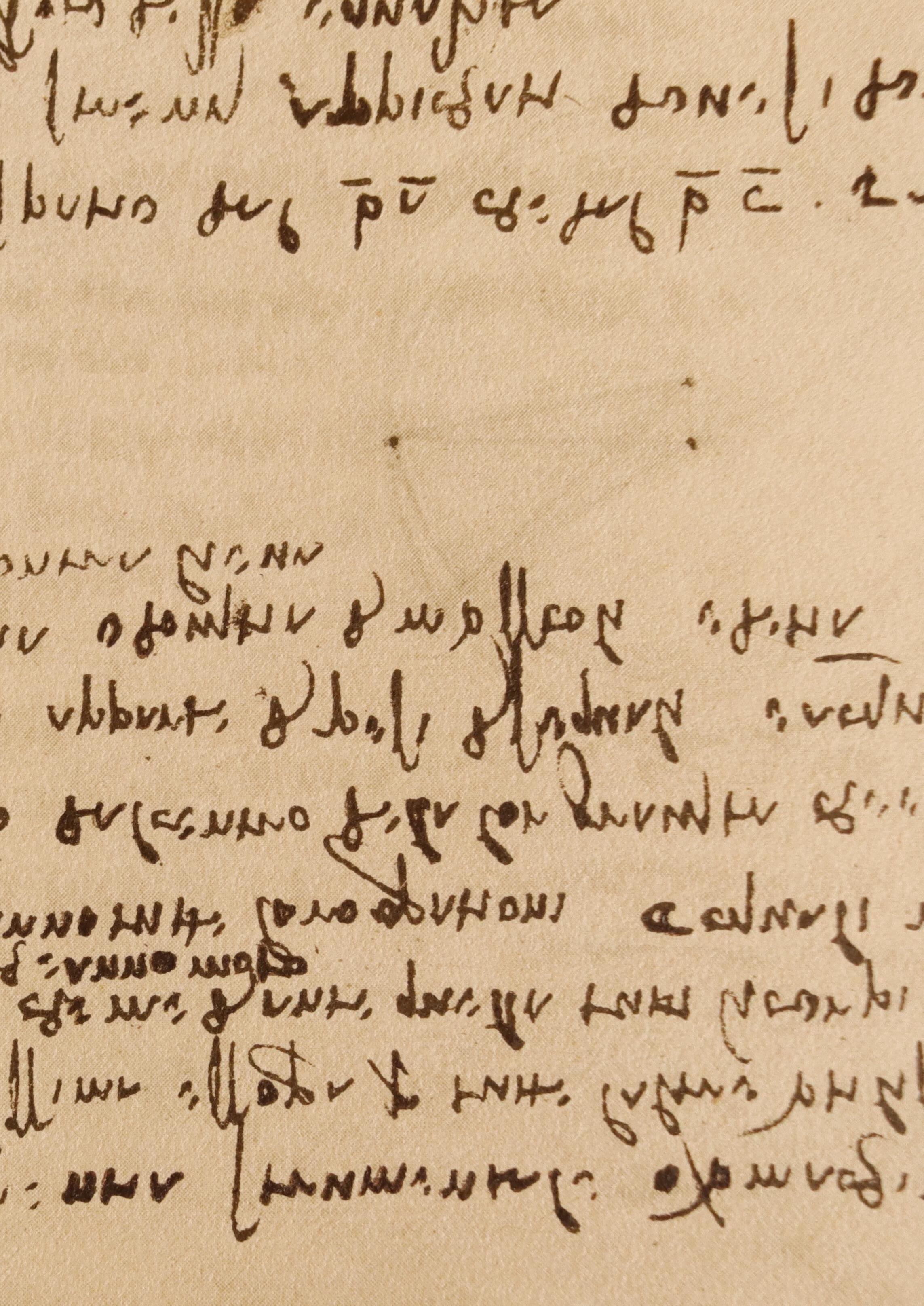
“It can inspire us to act today knowing we can make change, as many generations before us have done.
“Our history is also a record for us to stand on. We have two centuries of examples of workers coming together in their unions and taking collective action to win improvements to their rights and conditions. When we are explaining the benefits of unionism to our workmates who haven’t joined yet, having such a long and proud record to draw upon can be a great way to enhance our credibility.”
Dr Byrne says if your school or union decides to embrace their history, it should prioritise the stories of individual staff or members.
“So many of these stories can be lost. Working people make history, but this isn’t always captured in the history books. If we don’t take the time to record these stories, we risk losing them.
“The more of this we do the better.”
Plan ahead, and consider your end product (book, website, exhibition, film, podcast) before you do too much research, because the format will affect how you undertake the project.
• build an enthusiastic team with complementary skills and involve the staff/students/members in the project
• find out what members are curious about and make their responses drive your research
• invite people to contribute to the history in writing or through interviews
• check out whether there is an existing collection of interviews that you may be able to listen to, then plan to fill gaps in your understanding with new interviews, and
• get interview training via your state oral history association.
Don’t
• go down every rabbit hole following every random intriguing thread, and
• decide what to focus on early, so you don’t get lost in the archives and the interviewing.
Nuts and bolts
• always seek a broad range of perspectives. Ensure you cover the lived experience of the widest possible range of people involved in the organisation you are researching.
• for a school history project, for example, interview the principal, teachers or past students, but don’t forget non-teaching staff, school community members, volunteers or neighbours who have had a long involvement with the school and may have seen how it has changed over the years.
• plan to get the best possible audio quality when recording interviews. Borrow good quality recording equipment, and
• record in the quietest location you can find (rooms with carpet and curtains are good, while kitchens are not).
If possible, record .wav files which are archival standard (not .mp3s). Get your recording levels right (between -12 and -6 dB) and wear headphones while recording the interview so you can hear if the signal drops out or if there is interference. And always back up your recordings onto an external hard drive!
You need a consent form that gives your interviewees a say in what happens to their interview, how it will be used and who can have access to it now and in the future.
Oral History Australia, your state oral history organisation, and your local librarian can help with resources and advice.
“We can’t return to the past (and we shouldn’t try to) but we can learn the important lessons from it.”
Research from Western Sydney University suggests that understanding and finding personal connections with history may have become more important for students as they lived through the disruption of the COVID pandemic.
Re-thinking Historical Consciousness in a Pandemic: From Commemoration to Contestability by Kay Caroll and Kate Littlejohn reveals that students are practicing deep forms of engagement with history at primary and secondary levels – especially when it is framed as challenging, relevant, and open to questioning.
“Understanding our connection to the past, present and future enables young people to question the ideas that surround them and project alternative possible futures,” Dr Kay Carroll, Senior Lecturer of Education at Western Sydney University said.
“The COVID-19 pandemic was a dramatic disruption, living through an exceptional moment can shift how one is conscious of history – history becomes something happening now, leading to an unexpected future,” Dr Carroll said.

“We wanted to explore the significance of historical consciousness to young people in an early period of COVID-19.”
To do this, Dr Carroll and her colleagues used survey data from Australian school children aged 12–18 years. The survey covered 678 students; 33% of responses were from nongovernment schools, 18% from Catholic schools, 45% from government schools, and a further 3% from college settings.
Interviews were conducted separately with 39 primary and secondary teachers. Respondents across Australia were involved.
One of the most profound results of the research is that today’s students are far more connected to some forms of historical consciousness than they are to others.
History teacher and IEU member Michelle Pearson said the research indicates that history teachers played an active role in helping students to develop critical historical consciousness in a time of “unprecedented social trauma”.
Michelle teaches at Rouse Hill Anglican College in Sydney’s north-west.
“For history teachers, the disruption caused by COVID-19 was a challenge and a gift. The difficulty of online classrooms converged with exciting learning opportunities as teachers raised student awareness of the pandemic as a unique historical event,” Michelle said.
“Everyone had a story to tell, and students documented their experiences by enthusiastically writing COVID journals and creating virtual COVID museums, confirming the study’s findings that learners are engaged by the impact of historical events on ordinary people.
“Students became aware of the importance of conserving the past when the physical evidence of the pandemic was discarded and they collected ‘pandemic artefacts’, such as colourful masks and social distancing signs.
“In multicultural north-western Sydney, the shared, although temporary, experiences of being unable to visit family, whether it was grandparents in India or an aunt in Melbourne. This enabled students to reflect with more empathy on historical events or policies which resulted in families being separated from their loved ones.
“Students were exposed to international perspectives as they discussed the experiences of relatives outside Australia during COVID. Increasingly, young Australians locate themselves as citizens within a global community, another finding of the research.
“The study indicated that the pedagogical practices employed by history teachers enabled students to develop their own narratives of “resilience and resourcefulness” as well as “inclusion and agency,” in response to COVID. This critical historical consciousness, which allows students to effectively engage with other cultures and time periods, was heightened during the pandemic,” Michelle said.

Dr Carroll said students valued Indigenous perspectives, learning about the Stolen Generations, and exploring history through refugee stories. At the same time, engagement with the traditional narratives of Australian history – such as the First Fleet and the ANZACS – was only evident among 33% of students surveyed.
On the other hand, 60% enjoyed and were confident with a more critical take on history – one related to learning to interrogate primary sources and deal with ambiguities and gaps in historical records.
“National-centric history can be used for all kinds of political projects such as building collective memory, promoting reconciliation, memorialising, or obliterating the past to disenfranchise minorities or victims,” Dr Carroll said.
“In Australia our historical rhetoric has centred on mythologising Anzac and the ongoing denial of conflict, genocide, and dispossession. In this study, we see this is largely rejected by history teachers and their students.”
“About a third of young learners in our study still do connect with that traditional historical perspective to some extent. Possibly this connection with their national community during a disruptive time evoked empathy, a narrative of resilience and resourcefulness.
“However, for students who have Indigenous or migrant backgrounds, sharing their stories to challenge the dominant idea of Australian identity is a powerful form of inclusion.”
The study found that a critical approach to history was actively promoted by 87% of Australian teachers.
“This means setting tasks that require students to understand the evidence, interrogate sources and critique events from empathetic and informed standpoints,” Dr Carroll said.
“We heard teachers describe activities that use the lessons of the past to relate to modern problems as drivers of high engagement in their classrooms.”
Researchers perceived a critical consciousness about history in 60% of students’ survey responses.
“This means seeing history as a bit of an active process, an ongoing debate and interrogation. It is not undisputed facts and dates. There is contingency and contention.
“We found strong evidence that teachers have been using primary sources and inquiry approaches that include an awareness of ambiguity and omissions in the historical record.
“Teachers are making choices that show how history involves many perspectives. These choices include the use of inquiry methods, interpreting sources, and assigning openended project work.
“There was evidence throughout the surveys that students could see their own perspectives as shaped by history, that they are able to develop empathy with people in other times and understand that history can be framed to subjugate or omit the victims.
“We were able to hear about one student’s enthusiasm for hands-on activities in learning, particularly creating a source about famous Australian architect Harry Seidler, a significant refugee who contributed to Australian society. Many students found learning about the Holocaust and Jewish history powerful.
“A year 10 student brought up the impact of visiting a Jewish museum and hearing from a Holocaust survivor. Others felt a strong connection to research projects on the Stolen Generations and the experiences of Indigenous Australians with dispossession and child removal.
“Students really engage more deeply when presented with meaningful historical challenges that allow them to use multiple sources and connect them to own sense of identity. This is a strong reason for teachers emphasising critical thinking over narrating a tradition.
“Developing historical consciousness is incredibly important for children and young people, it is a root source of active and engaged citizenship and connection with their community.
“In the context of a global upheaval like COVID, with peer and social isolation and disruptions to schooling shaping young people’s lives, I find it so encouraging to see historical consciousness working as a thread, enabling young people to cling to their past, interpret their current story, and to look out towards a wider range of perspectives, possibilities, and choices,” Dr Carroll said.
Reference
Carroll, K., & Littlejohn, K. (2022). Re-thinking historical consciousness in a pandemic: From commemoration to contestability. The Curriculum Journal, 33, 222–237. https:// doi.org/10.1002/curj.143
“Students became aware of the importance of conserving the past when the physical evidence of the pandemic was discarded, and they collected ‘pandemic artefacts’.”
A major plank of the Federal Government’s bid to overhaul Australian universities is ensuring more students from diverse backgrounds finish university, writes Christine Morley, Professor of Social Work, Queensland University of Technology.

So far, the Universities Accord’s interim report has identified compulsory, unpaid work placements as a significant barrier.
Students often must take time out of paid work for these placements which can take place over multi-week blocks away from home.
We previously found compulsory unpaid placements lead to financial stress for students and are unsustainable. Our new survey research provides three ways to address ‘placement poverty’.
Many professional courses, such as nursing, teaching, social work,
psychology and the allied health professions, have significant work placement requirements.
These placements are hugely important for student learning, but the time commitment means students often have to give up paid work. There can also be extra travel and clothing costs.
Our 2022 research has shown how the resulting financial hardship and stress can stop students completing their degrees. It can also prevent people even considering university study, especially those from socially disadvantaged backgrounds.
The Australian Council of Heads of Social Work Education recently commissioned research to identify solutions. This 2023 study involved a nationwide survey of almost 1200 participants: 701 social work students, 196 educators and 294 practitioners.
It highlighted several potential ways to fix this situation:
Students in our survey reported they are regularly used as free labour to fill staff shortages in organisations that are not adequately resourced.
While placements should provide opportunities for learning (to develop new skills under supervision and within a supported environment), more than half the educators surveyed reported service providers won’t take students if they don’t already have the skills to perform the required work.
A further 43% of educators said organisations refused to host a student if they didn’t perform well during a pre-placement interview. This means organisations are routinely screening students to ensure they can perform unpaid work while on placement.
As one student told us: “While I understand we are students, we are still being expected to work, manage clients and assist in support roles (many
of which are emotionally taxing and complex) so I believe being unpaid for this is unethical”.
To fix this, we recommend the Federal Parliament changes the Fair Work Act, so vocational placements must be paid.
2. Pay students a minimum wage
Students in our research also talked about the importance of being paid from a cost-of-living perspective.
As a mature age student with two young children, it is impossible for me to be unpaid and undertake placement.
The Universities Accord interim report has suggested changes to the Higher Education Loans Program (HELP) (such as reduced fees), but this won’t help students with the upfront costs of daily living while doing placements.

The United Kingdom offers a bursary through the National Health Service to cover students’ expenses while on placement.
Despite the importance of paying students at least a minimum wage, it is clear the organisations they work for cannot pay. These mostly non-profit organisations are already underfunded. Existing placement shortages will only worsen if organisations are expected to pay.
Universities cannot pay either. There is no country in the world where universities pay students to do placements. And while there’s a perception some universities are flush with cash, the spoils are not spread evenly. Smaller, regional institutions would be most disadvantaged.
Higher education funding has also been shrinking for decades, so universities are forced to operate like businesses. Within this context, any costs they incur for placements would likely be passed on to students. Some universities may simply ditch professional courses if they become too expensive to run.
This means the Australian Government will have to pay, as an investment into vital professions, especially if we are to address workforce shortages.
Calculated at the minimum wage rate (before the recent minimum wage increase), Unions NSW estimated students should earn around A$21,000 for a placement.
This would mean the price tag for government would be in the millions (not billions) of dollars. It would also meet multiple goals of the Universities Accord. Along with improving equity, it also seeks to meet future skills needs.
An additional solution is for professional regulatory bodies to emphasise demonstrated learning outcomes, instead of an arbitrary ‘placement hours’ approach.
The most popular strategies to help reduce student poverty, as ranked by our respondents, were reducing placement hours by up to 20%, increasing recognition of prior learning, and allowing students to do a placement in an existing workplace.
Developing a ‘capability framework’ (that measures acquired learning, instead of hours served) also
had overwhelming support. One practitioner said, “More focus on demonstrating learning as opposed to just ‘ticking off hours’ could lead to shorter placements with a higher focus on the quality of learning”. What about learning?
Learning and working go hand in hand on placement. While current standards are often presumed to produce competent and ethical practitioners, our research shows students are being financially stretched and stressed.
We all need our professionals to be well prepared for the workplace. We also know poverty and stress do not help students concentrate or learn. Reflecting on their student experience, one practitioner told us: “For me it became just getting the hours done, rather than learning”.
Students should be reasonably compensated for the work they are doing. In addition to payment, research shows that reducing hours, and introducing more flexible work-based placements and ways to measure learning, would help.
The final Universities Accord report is due in December. There is a genuine opportunity here to end placement poverty.
This article originally appeared in The Conversation: theconversation. com/it-is-impossible-for-me-to-beunpaid-3-ways-to-fix-student-workplacements-213151
The IEUA assists members with personal industrial issues and bargains on behalf of all staff for better wages and conditions, but your union also interacts with an array of government and statutory authorities and lobbies them for better outcomes for education staff, Will Brodie writes.
The decisions made by the nation’s regulatory and research organisations help determine what life is like in schools for IEUA members, so the union’s work attending meetings and making submissions is crucial.
If teacher feedback doesn’t inform such bodies – as happened during the 2010s, when unions were sidelined under coalition federal governments, there are poor outcomes in schools, particularly on workload intensification.
During that decade of exclusion, teacher workloads spiralled out of control as more and more policies, tasks and administrative burdens fell on already overworked staff, distracting them from their core job in classrooms.
Thankfully, the IEUA across the nation possesses many passionate, articulate members ready to speak on behalf of their colleagues. It also features experts who know how to navigate the world of white papers and round tables.
However, under the Labor Government, we’ve gone from famine to feast. Previously sidelined from policymaking, unions are now being invited to take part in a lengthy list of reviews and initiatives.
The IEUA has already participated in 11 major inquiries or reviews since the election of the Albanese Government, and by August this year had issued 13 position papers on topics ranging from AI regulation to anti-discrimination laws.
While the extensive review of so many aspects of education is welcome, it presents challenges.
The drive for change from initiatives like the National School Reform Agreement (NSRA) and the National Teacher Workforce Action Plan is stretching bodies to tackle policies outside their traditional roles, making it more difficult to know exactly who is responsible for a particular issue.
And the Government now wants to hear directly from teachers and education support staff, not just union experts, so the IEUA needs a cohort of members ready to drop everything, often with less than a week’s notice, to join a ministerial discussion or address the mainstream media. Suddenly, with a glut of meetings to attend, it has become vital for the union to hone its focus. Accordingly, the IEUA has formulated a list of 10 key priorities to push with the Federal Government and associated education authorities:
1 Elimination of duplicative and excessive compliance requirements is critical. Employers must be dissuaded by government from applying additional overlays.
2 All existing and proposed initiatives should be subject to a workload impact assessment, in consultation with teachers – not just initiatives arising from the NSRA.
3 Nationally endorsed curriculum or assessment resources, (or resources approved by employers) must be provided to teachers, giving them the option to adopt as is, subject only to differentiation.
4 Guaranteed support of early career teachers must include structured release time for both early career teachers and their mentors.
5 Shortcuts to solve teacher shortages that weaken the integrity of teacher qualifications or dilute the standing of the profession are not shortcuts.
6 Until early childhood teachers are given the same pay, conditions, and access to registration as teachers in schools, the ECEC sector will continue to struggle.
7 Support staff are an essential component of successful learning outcomes for students and alleviation of workload burden on teachers. Their work must be valued through appropriate remuneration, training, and secure employment.
8 Transparent delivery of funding to areas of need, providing easier access to allied health services and a commitment to school-based staff and student wellbeing support, is essential.
9 Data collection must be a tool to address disadvantage rather than another workload burden.
10 The profession must maintain control of the application of generative AI in schools.
This hitlist of most relevant topics helps keep the union on point as the wide-ranging discussions about education progress.
IEUA Federal Assistant Secretary Veronica Yewdall says the IEUA engages with peak bodies such as the Australian Institute for Teaching and School Leadership (AITSL) to “secure improvements in workload, through looking at unnecessary, excessive and duplicative compliance requirements and advocating for preservation of the professional autonomy of all teachers”.
AITSL oversees each state’s regulatory bodies, provides “national leadership for the Commonwealth, state and territory governments in promoting excellence in the profession of teaching and school leadership,” guides reform in the areas of teacher registration and accreditation; is supposed to deliver reforms aimed to improve teacher quality and has responsibility for national professional standards and professional development for teachers and school leaders.
Incredibly, despite these vital duties, AITSL has excluded the IEUA from its board since 2010. The IEUA has continually lobbied for rectification of this egregious error.
In 2018, then IEUA Federal Secretary Chris Watt wrote, “Australian governments have actively disenfranchised the teaching profession…
“Australian teachers are in the absurd situation where the national body responsible for maintaining teacher standards and oversight of teacher education program standards, has no teachers, selected by or endorsed by the profession itself, on its board.
“One would struggle to find any other professional standards authority in any other industry where the profession was not only represented but formed the majority (or even totality) of the board of governance.”
In the same decade, legislative changes by states and territories also reduced the number of teachers on teacher registration authorities around the country.
The current AITSL board consists of high status public servants, senior academics, and think tank researchers. Hence, Watt’s words from 2018 still bear true:
“The appointment of teachers and their unions is critical to ensure that the voice of the profession is heard in every conversation in the work of AITSL. Anything less will mean that its work will remain disconnected, discounted, and viewed with suspicion. Anything less will mean that quality outcomes from its deliberations will be diminished. Anything less will continue to signal the Government’s lack of respect for the profession and the professional judgement of teachers.”
Given the Government’s willingness to consult on educational matters, there is hope for positive change on teacher and union representation.
The IEUA will never stop fighting to reinstate then maintain appropriate stakeholder representation on all bodies which administer the working lives of its members, guided by the motto: “Nothing about us without us”.
A primary example of the IEUA’s targeted approach to major reviews is its response to the NSRA, which aims to provide “greater funding transparency and smarter delivery of targeted support to staff and students”. The priority of the IEUA submission is reducing teacher workload and burnout.
The IEUA says the NSRA can deliver practical and enforceable reforms to schools suffering a staffing crisis if it focuses on:
• nationally endorsed curriculum or assessment resources
• streamlined compliance requirements
• resourcing of additional support staff duties, and
• guaranteed support of early career teachers.
The IEUA submission said: “All teachers and support staff must have school workplaces free from excessive workloads and unsustainable rates of staff turnover.
“All proposed NSRA outcomes will be subject to the Teacher Workload Impact Assessment required by the National Teacher Action Workforce Plan. This is a vital protection for IEUA members – the NSRA must help attract and retain teachers rather than exacerbate workloads or inflame staff shortages.”
“Incredibly, AITSL has excluded the IEUA from its board since 2010. The IEUA has continually lobbied for rectification of this egregious error.”
The voice of IEUA members is being heard on the issue of artificial intelligence (AI) and digital technologies usage in schools, Emily Campbell writes.
IEUA Federal Secretary Brad Hayes said our union was actively contributing to various consultations and inquiries underway at state, territory, federal and international levels that seek to respond to the impact of AI in education settings.
“In May 2023, a federal parliamentary inquiry was established to examine the risks and opportunities associated with generative AI tools in school and tertiary education settings,” Hayes said.
“Shortly after, the IEUA made a submission to the House Standing Committee on Employment, Education and Training inquiry into the use of generative AI in Australia’s education system.
“Most recently, our federal union made a written submission in response to the draft framework published by the Federal Government’s Artificial Intelligence (AI) Taskforce, which outlines core elements and principles to guide the use of AI in schools,” he said.
In some jurisdictions such as Queensland, state and territory governments have held their own inquiries, engaging with education stakeholders to determine the best course of action regarding AI in schools.

Hayes said IEUA representation on groups such as the Federal Education Minister’s AI in Schools Taskforce was crucial to ensuring the insights of practising teachers and education staff informed policy.
“Our schools are places of innovation and creativity where new technologies are embraced to benefit student learning; however, IEUA members have identified serious issues to be managed in the use of emerging AI programs in education,” Hayes said.
“These concerns include veracity of information, respect for intellectual property, data security and online privacy and safety issues for staff and students.
“School employers and governments have a joint duty of care to their staff and students to address these concerns, so generative AI tools are not a threat to privacy, equity and wellbeing, but rather a valuable resource that equips learners for future-focused education,” he said.
In submissions to both the House Standing Committee and the AI in Education Taskforce inquiries, our union reiterated the voice of the teaching profession must be paramount during consultation to develop appropriate guidelines regarding the use of AI and digital technology in education.
“The National AI Taskforce and all other agencies collaborating on AI guidelines must include meaningful engagement with the education workforce and their union representatives,” Hayes said.
“The professional judgement and autonomy of education workers and school leaders must be respected because practising classroom
teachers are best placed to decide how, when and where AI or any digital technology is deployed in their classrooms,” he said.
Several key considerations were outlined in our federal union’s submission to the House Standing Committee, highlighting the threats and opportunities presented by AI in education.
Hayes said the submission emphasised that the primacy of relationships and teachers’ professional judgement and autonomy must not be undermined by AI technologies.
“Professional relationships between teachers, support staff and students in achieving learning outcomes and preserving student wellbeing cannot be trivialised,” he said.
“Any diminution of the role of human relationships, risks to employment or deskilling of teachers and support staff, is likely to have long-term negative consequences for students, families and school communities.
“Differentiation of content and assessment practices must remain within the control of classroom teachers, not dictated by education providers as digital technologies advance,” he said.
The submission acknowledged that developing strong critical literacy skills in students of all ages was more important than ever.
“In consultation with teachers, careful review of current curriculums should be undertaken to ensure the sequential and age-appropriate development of ethics and critical literacy skills in students,” Hayes said.
“AI policy responses and amended school practices designed to safeguard the integrity of student work and academic assessments must also be evaluated.
“Teachers require ongoing access to high-quality professional development related to AI in education.
“The impact of AI on teacher workload and work intensification must be monitored, and additional resourcing of time given to teachers to undergo PD and manage such challenges,” he said.
Hayes said capitalising on the opportunities presented by AI must be balanced with protections for staff and students.
“The responsibility for managing safety risks is a burden that cannot lie solely with education practitioners.
“Government agencies, education systems, and employers must take joint responsibility for a co-ordinated approach.
“The rush to implement emerging technologies should be tempered by a considered approach to managing risks, including the spread of misinformation and threats to security and privacy,” he said.
Another key consideration raised in the submission is the need to prevent AI from perpetuating inequity by ensuring all schools have access to AI and digital technology.
“Students from disadvantaged backgrounds must be given equal opportunity to engage with AI in education,” Hayes said.
“Equitable access for all students, including from regional and remote areas, should be guaranteed through significant and ongoing investment in infrastructure and the elimination of any disparity between levels of use available to schools,” he said.
and potential impact of different risks evolve as technologies change and adapt.
“The draft guidelines do not currently acknowledge the need for a co-ordinated, systemic and frequently updated approach to identifying and managing risks arising from AI use in school settings.
“Developers of AI technologies and governments should be taking a role in risk identification and management, in consultation with school staff,” he said.
The risks in question are broad and wide-ranging; these include, but are not limited to:
• breaches of student privacy
• erosion of professional skills
• exposure to harmful content
• perpetuation of social and economic injustice, and
• negative impacts on human relationships.
Hayes said the IEUA called for two new core elements to be added to the draft framework, which can better provide guidance to achieve improved education outcomes for all student cohorts. The new core elements are:
• consultation with the teaching profession (and other school staff including librarians and cultural competence educators) and their unions, and
The draft framework released by the federal AI Taskforce focuses primarily on the benefits of AI for education outcomes.
It is premised on considerable confidence in establishing the safe use of generative AI in Australian schools.
“In our feedback, we indicated the draft framework does not give enough attention to the considerable risks for education outcomes and safety,” Hayes said.
Hayes said establishing national guidelines was important, given the complexity of issues and that it is useful to develop principles that should underpin the decisions of schools and teachers about how and when AI is deployed.
“The principles outlined in the draft are sound but insufficient,” he said.
“While the IEUA supports a framework that acknowledges the role of school leadership in providing support and guidance for classroom teachers, there are concerns that the guidelines, in their current form, place the burden of risk identification and risk management on schools and teachers.
“This is inappropriate, particularly where schools are understaffed and under-resourced and where the nature
• decisions about the use of generative AI in schools must be subject to a Teacher Workload Impact Assessment.
“Employers and governments have a joint duty of care to students and teachers to consult closely with education professionals in their workplaces and through their unions to address insights and concerns.
“The draft framework must also address workload and wellbeing to have meaningful application.”
Hayes said regular and ongoing consultation with practising teachers will be necessary to monitor how AI usage impacts teachers, students and the wider community.
“Our federal union will continue to actively ensure members’ voices are heard in this space.
“Ultimately, AI must be the servant of teachers and students, not their master,” he said.
Members can access the full submissions to both the House Standing Committee and the AI Taskforce’s draft guidelines at: www.ieu.org.au/policy-submission
“Ultimately, AI must be the servant of teachers and students, not their master.”
The Office of the eSafety Commissioner reports that complaints of serious cyberbullying involving children under 14 years has tripled in the last year compared to pre-pandemic 2019, Emily Campbell writes.
In response, the regulator has created an engaging new suite of educational resources for teachers to help primary school-aged children develop digital safety skills to reduce the risk of online harm.
As children begin accessing digital technology, social media and the internet at increasingly early ages, experts believe young children should be taught responsible digital citizenship skills, which they say are just as vital as concepts like road safety and stranger danger.
eSafety Commissioner Julie Inman Grant said research indicates 81% of parents with children between 2–5 years report their children regularly using the internet, a statistic reinforcing the need for an early introductory education to safe internet usage.
“The new eSafety materials we have released provide ageappropriate, curriculum-aligned resources which are suitable for children aged 5–8, complementing and extending on eSafety’s Early Years program designed for infants and preschool children,” Inman Grant said.
“The materials include play-based classroom activities, teacher professional learning modules and activities for children which can be completed at home,” she said.
The classroom resources feature four fun bush characters, collectively known as the Mighty Heroes, each promoting a key online safety message for children. The Mighty Heroes and their safety messages are:
Wanda the echidna: I am responsible – I protect my personal information
River the sugar glider: I show respect – I am kind and caring to others
Dusty the frilled-neck lizard: I trust my feelings – I get help if something doesn’t feel right Billie the bilby: I investigate – I question what I see, hear and do online.
The Mighty Heroes resources were developed with the input of teachers and aligned to the Australian Curriculum and Best Practice Framework for Online Safety Education.
The resources are accompanied by free, self-paced, online professional learning modules for teachers, including evidence-based advice and practical strategies for teaching online safety in the classroom.
Inman Grant said education professionals are in a strong position to demonstrate positive online behaviours to young children.
“Teachers, as well as parents and carers, can play a pivotal role in helping children develop digital skills to have positive, safe experiences online and develop good habits when using technology,” she said.
The new materials aimed at early to middle primary school-aged children add to the expansive collection of resources available for education professionals on the eSafety Commission’s website.
The launch of the new Mighty Heroes resources follows the Federal Government’s 2023-2024 budget pledge of an additional $132.1 million in funding over four years to the Office of the eSafety Commissioner.
“The funding certainty provided by the most recent budget reflects the long-term need for eSafety’s work,” Inman Grant said.
“It will help us plan ahead to continue promoting safer, more positive experiences for all Australians,” she said.
In December 2022, education authorities and peak bodies united to join a new national council led by the eSafety Commissioner to fight online harm in school communities throughout Australia.
The National Online Safety Education Council will meet regularly to boost cooperation among educators, addressing a range of interconnected harms occurring in Australian classrooms, school yards and homes.
Inman Grant said complaints to eSafety continued to increase substantially across all reporting schemes, including those involving school-age children.
She said her office recently received its first reports of children using generative artificial intelligence to create sexually explicit imaged-based abuse to bully their peers.
“The challenges schools face are not unique to any one system or region – they are increasingly common across Australia,” Inman Grant said.
“Almost two-thirds of young people aged 14–17 have been exposed to harmful content online and schools play a pivotal role in helping them develop the digital skills they need to stay safe.
“We need to support all schools and ensure students, parents and teachers everywhere know how to report abuse and access resources through eSafety,” she said.
Members are encouraged to access the suite of free eSafety education materials including the new Mighty Heroes resources online at www.esafety.gov.au/educators

DeadlyScience has launched an initiative to give First Nations students living in remote and rural communities the opportunity to engage with hands-on science learning, Emily Campbell writes.
Children living in the rural community of Robinson River in the Northern Territory recently piloted a new science kit exploring the chemistry of soap-making and hygiene as part of the new DeadlyLabs project, run by DeadlyScience and pharmaceutical tech company Merck.
The soap-making chemistry kit was the first in a series of DeadlyLab kits, with future kits to explore physics, biology and more.
Kamilaroi man Corey Tutt OAM founded DeadlyScience in 2019 to help create STEM equity for Aboriginal and Torres Strait Islander learners.
As a young person, he developed a love of STEM (science, technology, engineering and mathematics) subjects but found little encouragement for First Nations Peoples to pursue careers in STEM.
Regional and remote schools were often critically under-resourced, so Corey wanted to ensure these students received the same high-quality STEM learning experiences as those in urban areas.
Corey worked two jobs so he could purchase and send resources to some of these disadvantaged schools before the charity was established.
DeadlyScience has since grown to be Australia’s leading First Nations STEM charity, working with more than 800 schools and communities nationwide.
The organisation acknowledges that First Nations Peoples have used science for over 65,000 years and that the first scientists passed on the lessons of the land, sea and sky to the future scientists of today through stories, song and dance.
Corey believes that DeadlyScience has a cultural responsibility to our first and future scientists.
“By providing these children with experimental kits, we will promote interest and engagement of science during early learning and create pathways for upcoming scientists to emerge from these rural communities,” he said.
Corey said local Elders had full autonomy over the DeadlyLabs pilot project in Robinson River, which the Garawa and Gunindiri Peoples developed with support from DeadlyScience and Merck.
“DeadlyLabs is the next step in giving Indigenous learners more opportunities to learn and play with science from an early age and highlight career pathways for upcoming scientists,” Corey said.
“The Elders want to pass down their knowledge of the value of cleanliness.
“We’ve had the privilege of listening to and learning from the principal of Robinson River School, as well as two Indigenous Elders, Aunty Patsy-Anne and Aunty Susan,” he said.
Following the pilot, DeadlyScience and Merck are refining the chemistry lessons and activities based on results and participant feedback.
The plan is to expand distribution by sending the DeadlyLab Chemistry kits to more students and their communities.
Sparking interest in science
Rebecca Lee, Managing Director Life Science and Country Speaker at Merck ANZ, said the company was excited to be involved in the DeadlyLabs project and spark children’s interest in science.
“The science of soap-making is a fun way to explore and address the serious topic of staying healthy,” Rebecca said.
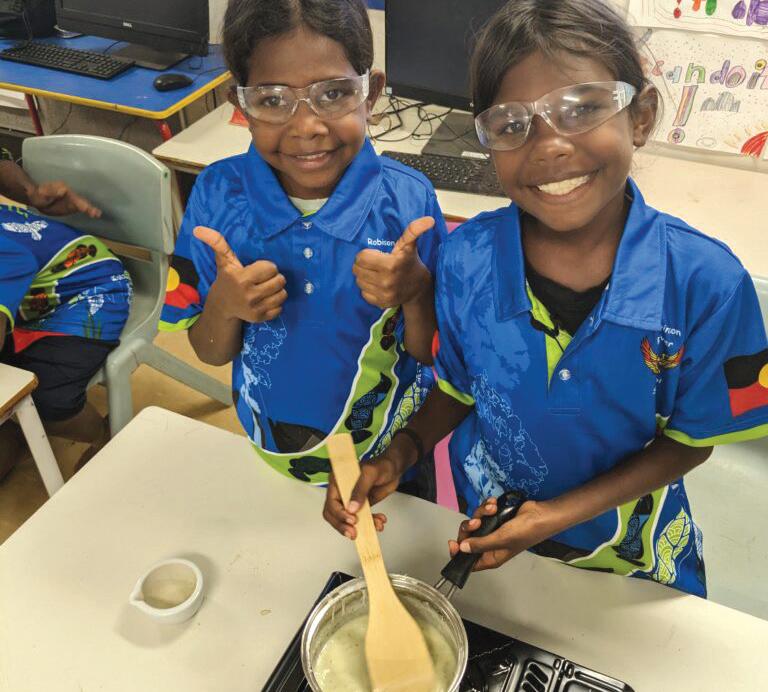
“This is important as Australian Institute of Health and Welfare statistics show that some life-shortening infectious diseases like rheumatic heart disease are more prevalent in regional and remote areas.
“As a science-based organisation, we know the value of testing ideas, gathering data and measuring impact, so we’re particularly pleased to be part of an initiative that is both doing and studying the impact of Indigenous science education,” she said.
Each DeadlyLabs kit will contain an at-home or in-class experimental kit, which will be made accessible to younger scientists, lower literacy groups and underprivileged communities.
DeadlyScience plans on gathering data to measure the impact of the program, too.
“This project will be the first to collect culturally appropriate metrics on science education in Indigenous communities,” Corey said.
To find out more about DeadlyScience and the DeadlyLabs initiative or to donate to the organisation, visit their website at deadlyscience.org.au

“This is our chance to shape a stronger and fairer school system.”
What reforms does the Australian education system need?
The IEUA is calling on the Federal Government to make key changes to its National School Reform Agreement (NSRA) to address the crisis in education, Katie Fotheringham writes.
In March 2023, Federal Education Minister Jason Clare announced an expert panel to advise on the key targets and reforms to be tied to school funding in the next NSRA.
The panel aimed to drive ‘real and measurable’ improvements for students across Australia and ensure all schools reached 100% of their School Resourcing Standard (SRS).
Brad Hayes, IEUA Federal Secretary, said the IEUA had been engaged throughout the development process.
“Our federal union met with the expert panel on 15 June as they developed the draft consultation paper,” Hayes said.
“We are a member of the NSRA Ministerial Reference Group that met at Parliament House to develop NSRA outcomes on 7 July and will meet again on 6 October.
“This is our chance to shape a stronger and fairer school system.
“Education funding is the basis of not only high-quality educational outcomes and student wellbeing, it also directly impacts wages and conditions in school workplaces currently in the midst of a national staffing crisis.”
Hayes said that from our union’s perspective, two key priority reforms should be addressed as part of the NSRA – reducing teacher workload and burnout, plus targeting educational disadvantage.
“All teachers and support staff must have school workplaces free from excessive workloads and unsustainable staff turnover rates.
“All Australian students must have access to high quality and affordable education,” Hayes said.
Hayes said that the National Teacher Workload Action Plan (NTWAP) requires that all NSRA outcomes are subject to a Teacher Workload Impact Assessment.
“This is a critical requirement – any NSRA initiatives must help reduce teacher workload and not exacerbate the problem,” he said.
“In considering the NSRA review in conjunction with the NTWAP, more practical and enforceable outcomes are needed to provide a systematic response to teacher workload.
“This is a vital protection for IEUA members – the NSRA must help attract and retain teachers rather than
exacerbate workloads or inflame staff shortages,” he said.
The IEUA supports the development of nationally endorsed curriculum or assessment resources, if they continue to operate on an ‘opt-in’ basis.
“School employers must be encouraged to endorse such resources, or alternatively, supply their own resources while avoiding unnecessary duplication or overlay of tasks,” he said.
Hayes said the NSRA should also ensure teachers are not continually burdened with compliance tasks and bureaucracy.
“The Department of Education should, in consultation with education unions, initiate a review of school compliance regulations to identify and eliminate duplication and/or excessive work tasks.
“Funding to school employers should be dependent on adherence to such new streamlined compliance requirements, with schools required to demonstrate that they had not overlaid additional or excessive requirements (eg NCCD reporting, Teacher Performance and Development Framework etc),” he said.
In a sector plagued with high levels of burnout, it is vital that additional paid hours be made available to school support staff who could assist in easing teacher workloads.
“The NTWAP considers increasing school support staff responsibilities to ease the workload burden on teachers.
“However, for such a plan to succeed at the school level, additional employer resourcing is needed to increase support staff hours to take on such duties.
“Many collective agreements in our sector already contain provisions that enable additional support staff duties to assist teachers; however, in practice they fail to provide any material benefit unless the employer allocates additional resources to fund increased support staff hours,” he said.
It was also vital that teachers were provided with adequate support in their first years of teaching to address retention issues.
“The IEUA notes the appropriate focus on early career teachers in the NTWAP and the development of national guidelines to support early career teachers.
“Funding to school employers should be contingent on the demonstrated delivery of best-practice early career teacher support strategies including mandatory induction programs, reduced teaching loads in the initial years of teaching and resourced mentoring programs that provide paid release time for the teacher and their mentor,” Hayes said.
The second key priority reform highlighted by the IEUA was the intention for the new agreement to target educational disadvantage in remote and regional Australia and within First Nations communities, while exploring all options to better support students who have been left behind or been left out of the schooling system.
“Our nation’s schools deserve every resource needed to deliver the best education possible.
“The IEUA strongly supports the Australian Education Union’s call for the full funding of the public sector by the provision of 100 per cent of the SRS for every public school in the country.

”Transparency regarding the delivery of funding to areas of need was also a crucial aspect of the new NSRA.
“School staff and families must have full confidence that targeted funding is actually used for the benefit of the individual student or specific area of need.
”Student wellbeing is of paramount importance, and schools must be equipped to assist students who require additional support.
“The review appears to assume the presence of dedicated wellbeing staff in schools; however, this is often not the case.
“In reality, such specialist responsibilities are often added to already overloaded classroom teachers or leadership positions who are not necessarily equipped or able to provide such support,” Hayes said.
Our union recently made a formal submission in response to the questions posed in the Review to Inform a Better and Fairer Education System Consultation Paper.
”The submission reiterates our union’s priority reforms and outlines specific solutions required to improve our schooling system.
“The IEUA urges the Government to prioritise the voice of the profession during the NSRA Review through genuine consultation with classroom teachers and their unions.
“Our union remains ready to engage with governments and other stakeholders to meaningfully address the challenges posed and opportunities offered in our quest for a better and fairer education system for all students,” Hayes said.
Read the full submission at: bit.ly/3RnPkg1
With principals, middle leaders and highly accomplished and lead teachers (HALT) faced with growing challenges due to ever-increasing bureaucracy and compliance tasks, Katie Fotheringham explores what it means to be a school leader in 2023.

Managing challenging student behaviour, filling in for absent staff members and ensuring schools comply with complex rules and regulations, our school leader members navigate a complex yet essential maze of tasks daily within their roles.
We’re all too aware of how crucial school leaders are to our school communities, yet research has shown that today’s school leaders are often overwhelmed with high expectations, paperwork and poor work-life balance.
Recent research has shown that the increasing bureaucratisation of leadership roles has hindered school leaders’ ability to complete the essential aspects of their jobs.
A Queensland IEU member said they had been working as an assistant principal for just over 12 months, following a period working as an Assistant Principal Religious Education
(APRE), and noted that paperwork takes up a significant part of their working week.
“National Consistent Collection of Data (NCDD) and the associated bureaucracy means I am constantly completing paperwork instead of working with teachers and students,” they said.
“The same applies to managing inappropriate behaviour by students – the amount of paperwork and bureaucracy required to defend a teacher’s decision makes discipline an ongoing and tedious process,” they said,
The member said that beyond bureaucracy, managing parent expectations in a post-COVID world was also a major challenge for school leaders.
“Since lock-downs, parents are increasingly forthcoming with their opinions and expectations, particularly on social media platforms and email, where there is a tendency for them to be much more brazen and overly critical than they would be in person,” they said.
“This has greatly increased pressures on leaders to perform and the expectation of solving any and all problems,” they said.
Another Queensland member said they had undertaken
“There is an endless stream of paperwork and extra procedures required to do most jobs now.”
curriculum middle leader roles at various schools and agreed that administration tasks had become a significant burden.
“There is an endless stream of paperwork and extra procedures required to do most jobs now,” they said.
“There is never enough time in the day for elements added into curriculum that need to be timetabled, planned for and delivered,” they said.
IEU-QNT Branch Secretary Terry Burke said the summary findings of the 2022 Australian Principal Occupational Health, Safety and Wellbeing Survey reinforced the extent of the sector’s crisis and urgent interventions by government and school employers were needed.
“Over the past 10 years, school leaders have faced an increasing rate of bullying, physical violence, threats of violence, slander, sexual and verbal harassment,” Burke said.
“We see this in the burnout of our school leaders and the increasing rates of school refusal by students.
“The survey findings were yet another red flag.

“The number of principals looking to retire has tripled in the last three years for the same reasons as our teachers –workload and a lack of time to focus on their core duties as a school leader,” Burke said.
Middle leaders such as heads of department, heads of year level, master teachers and heads of special education services all make vital contributions to our school communities.
Unlike teachers and principals however, there is currently no shared definition of middle leadership in Australia.
IEU-QNT Research Officer Adele Schmidt said that Australian Institute for Teaching and School Leadership (AITSL) has begun a partnership with the Queensland Department of Education to develop and trial national professional standards for middle leaders.
“Middle leaders play a pivotal role in leading teaching, learning and student support; however, there is often a lack of clarity or inconsistency regarding their roles, expectations, titles, levels of support and opportunities for career progression,” Schmidt said.
“A professional standard for middle leaders would sit between the Australian Professional Standards for Teachers (APST) and the Australian Professional Standard for Principals (APSP),” she said.
At this stage, middle leader professional standards are still in development; however, Schmidt said they would likely include a variety of professional requirements and professional development (PD) measures that middle leaders would have to comply with to progress in their careers.
“The proposed professional standards could look like PD conversations, planning professional learning experiences and a clearer understanding of what a middle leader’s next career stage might involve,” Schmidt said.
“They could serve as a tool to support career middle leaders or aspirant principals to develop their leadership expertise.
“Having sector-wide clearly defined roles for middle leaders might also clarify specific expectations and responsibilities.
”Our union’s involvement in the reference group and members’ participation in the national survey is crucial.
“A key function of the reference group is to provide advice and feedback on the draft professional standard for middle leaders as AITSL develops it.
“A priority of this process is ensuring that any introduced standards do not exacerbate workload issues and function as a tool to help leaders,” Schmidt said.
With all the challenges faced by our school leaders, we asked members what advice they would give to aspirant school leaders working in the sector today.
The senior leader member from Queensland advised members to carefully consider progressing as a school leader with the current expectations and requirements.
“My advice would be to think carefully about what is required,” they said.
“There is a significant personal cost to anyone who would like to go into leadership – this cost will also impact the leader’s personal life,” they said.
The curriculum middle leader member from Queensland said knowledge was key when it came to school leadership.
“Be organised, approachable and prepared for the unexpected,” they said.
“Make sure you know not only your curriculum area, but school processes around data, ethos, mission and academic procedures – you’ll be surprised what employers ask in interviews and what you’ll be doing in a leadership role daily.
The member said IEU membership had made a difference in their career as a school leader by providing advice and support when needed.
“It’s always reassuring knowing there is someone impartial to go to who has your back to bounce workload frustrations, expectations and issues off – being a member of our union is always a great idea,” they said.
Our union is calling for urgent action to address the health and wellbeing of school leaders.
“The Australian education sector is in a workload crisis,” Burke said.
“Our union will continue to advocate and push for changes to address these issues to make school leadership an appealing career path.
“Teaching should be a lifelong vocation with career progression available to those who desire it.
“Meaningful intervention to workload and work intensification is required imminently to allow school leaders to get back to what they are supposed to be doing – supporting staff and students and fostering an inclusive school community,” Burke said.
Implementing a Reconciliation Action Plan (RAP) is a genuine and effective way for schools and unions to foster and support Australia’s national reconciliation movement.
Reconciliation aims to promote and facilitate respect, trust and positive relationships between First Nations Peoples and the wider Australian community.
A RAP provides a framework for organisations to implement so they may take actionable steps towards achieving reconciliation.
At its AGM in 2020, the IEUA NSW/ACT Branch resolved to support the Uluru Statement from the Heart. This resolution provided the catalyst for shifting the focus onto the organisation and its structures. The Branch committed to reconciliation by developing a RAP, overseen by its Aboriginal and Torres Strait Islander Advisory Committee.
This phase of the IEUA NSW/ACT Branch’s reconciliation journey will turn good intentions into measurable actions that support Aboriginal and Torres Strait Islander people to achieve equality. Key components of the Branch’s RAP are Relationships, Respect and Opportunities. Practical steps are already underway to achieve aspects of these components.

IEU-QNT launched its latest RAP earlier this year. It aims to close the industrial gap for First Nations education workers in Queensland and Northern Territory non-government schools. IEU Branch Secretary and RAP caretaker Terry Burke said the new document built on the union’s previous reconciliation work.
“We commence this RAP in a spirit of sincere hope that we might work with our First Nations members and Elders to ensure that First Nations histories, cultures and perspectives are assigned value in education systems, policies and
IEUA QNT’s RAP cover features artwork by Tamara Piva, IEUQNT Indigenous Excellence in Art Design Award recipient
processes and that those systems, policies and processes are enacted in ways that ensure continuity of the oldest living culture on the planet,” Burke said.
“Our organisation is proud to have progressed through two previous Innovate RAPs and even more proud that we have established strong, constructive relationships with our First Nations members and other reconciliation stakeholders,” he said.

The Innovate level RAP will operate throughout 2023 and 2024 and outlines the IEUQNT’s actions for achieving its vision for reconciliation.
The new RAP contains two significant features our union is committed to: Closing the Industrial Gap for First Nations education workers and protecting Indigenous Cultural and Intellectual Property (ICIP).
The RAP was drafted after extensive consultation and input from the IEU-QNT Yubbah Action Group, which is the working group comprised of First Nations IEU members who oversee the implementation and monitor the progress of the RAP.
IEU-QNT teacher member and Yubbah Action Group member Barbara Dewis said our union had come a long way in terms of reconciliation.
“The RAP symbolises the commitment to reconciliation of First Nations Peoples with the wider community to build relationships and understanding of Aboriginal and Torres

“I started with the IEU Logo and symbolised it with a yellow/ochre Australia in a forest green circle. In the centre is the land (Australia), gum leaves and bush foods (macadamias of the North Coast) – surrounded by the colours of the Australian bush. The blues represent connections to the sea, ocean that surround our country. Spirit circles that depict our shared stories and spiritual connections to the Great Southern Land.”
Strait Islander peoples and culture steeped in tradition,” Barbara said.
“Having a RAP in place enhances further awareness of culture and understanding for all members to be comfortable in addressing concerns and issues that will and can affect First Nations Peoples.
“The IEU Victoria Tasmania’s (VicTas) RAP was formally endorsed by Reconciliation Australia in August 2020.
It outlines goals and actions the union can take to be better allies and to better support its First Nations members. The RAP process led to the development of a First Nations Allies Group among staff, which has met regularly to drive the union’s support for Indigenous educators and the Voice to Parliament Yes vote campaign.
The Vic Tas RAP acknowledged that the union was in the initial stages of its reconciliation journey and “we want and need to do more”.
“We have connected with other branches of the IEU nationally, some of whom have begun their reconciliation journey and have completed RAPs,” Secretary David Brear said.
“This connection has led to a strengthening of our understanding and ability to seek support from colleagues who understand the impact this journey is having on our members and students,” Brear said.
“We commence this RAP in a spirit of sincere hope that we might work with our First Nations members and Elders to ensure that First Nations histories, cultures and perspectives are assigned value in education systems, policies and processes and that those systems, policies and processes are enacted in ways that ensure continuity of the oldest living culture on the planet.”
Girls at high school who seek support for homework or assignments online might be harming their mental health, Sue Osborne writes.
A recent study published in the Australian Journal of Psychology found girls who turned to friends via social media for help instead of asking teachers, friends or family for academic advice in person, were more likely to suffer depression and anxiety.
In the study by researchers from Western Sydney, Macquarie and Wollongong universities, 186 girls aged 12–15 were presented with four typical academic scenarios which could lead to stress, such as difficulties keeping up with homework or not understanding homework.

Participants were asked to rate their likelihood of seeking support from either family, friends or digital sources. Those who indicated they were going to seek help from informal online sources showed higher levels of anxiety and depression.
While on face value asking online friends for help with homework might sound positive, this research suggests the behaviour may not always be beneficial.
Dr Erin Mackenzie, Senior Lecturer in Educational Psychology and STEM at Western Sydney University and study lead, said, “an implication of these findings is that it is important for adolescents to keep channels of communication open with their parents, and ideally face-to-face with their friends”.
The girls tended to use texts/ iMessages, Instagram, Snapchat, Facebook and Kik. [The researchers noted these were most popular when the research was taking place – other platforms such as Tik Tok may have taken over now].
Dr Anne McMaugh, Senior Lecturer in Educational Psychology at Macquarie University and a study co-author, said, “Students may be particularly vulnerable if they are seeking informal
support online and not receiving the support they need”.
“There may be a role for teachers to help students by monitoring their load of daily stressors and teaching them strategies to manage these stressors. When giving students academic work or homework, teachers could match it with help-seeking and support strategies,” Dr McMaugh said.
“We can reduce academic stress with regular ‘check ins’ with students and frequent feedback intervals. Keep an eye on those who may be more vulnerable to academic stress, such as those with a history of anxiety and those with more worry about ‘getting it 100% right’ all the time, as these ‘perfectionistic’ characteristics can be associated with stress and anxiety.”
What to look out for
Dr McMaugh also advised teachers can look out for students who do not appear to have close friendships or close peer relationships at school. These girls may not benefit as much from the peer-to- peer learning and supportive help-giving and sharing that occurs in typical friendly relationships.
However, teachers might also look out for students who show too much dependency on ‘unhelpful’ forms of support seeking such as simply asking for the answers or relying on friends a lot in class for help and guidance.
“This might indicate a range of other possible concerns such as lack of understanding of the content (a learning concern) or feelings of anxiety about whether they understood or got the ‘right answer’,” she said.
“In other cases, learning difficulties, hearing or communication difficulties might mean students rely on support from peers in class to interpret teacher instructions.
“Teachers need to be aware of their students’ academic and learning behaviours, as well as signs of anxiety and depression in adolescents.
“For example, in terms of academic behaviours such as support seeking,
teachers could survey students in a friendly manner about how they seek help for their academic work and homework tasks. This would help them understand the ‘demands’ on mum and dad and any peer-to-peer or online strategies the girls might be using.”
If students need help frequently, it may suggest that more explicit teaching and task practice is needed in class time before setting homework.
There are resources designed to help teachers deal with anxiety and depression among students, including the BeYou resources. Academic stressors will be felt more keenly by students with existing mental health disorders and these students may need more explicit teaching and scaffolded tasks that are broken down into manageable steps, Dr McMaugh said.

“Encouraging students to stay connected with positive forms of informal support such as their friends is an important stress management strategy; helping adolescents identify other sources of formal support such as HeadSpace is also a great idea. We need to offer adolescents several examples of positive places to seek support to prevent unhelpful or problematic forms of support seeking.”
Dr McMaugh said teaching students to cope with stressors should not be left to the senior years of schooling, as social and emotional resilience can be developed and continues to grow throughout the years of schooling.
“Class time teaching strategies can also include reminders about how to ask for help and support.
“The teacher is best placed to help students understand their tasks so by ‘normalising’ help seeking and providing time and places to seek support from teachers is a great way to establish healthy support seeking behaviours.
“Homework support clubs, devoting 15 minutes in classes several times a week for students to start homework
tasks and come and seek help in class time is also a great way to encourage support seeking from a teacher.
“We can also train our students to become ‘self-aware’ of their own stress or support needs. We can teach them about their own ‘mindsets’ and encourage positive self-talk. We can teach self-regulation and self-monitoring strategies, so that homework and other tasks are broken down into a careful self-regulatory cycle of steps.
“Teachers can build self-regulation steps into their task by scaffolding the academic task around these phases.
“It is important in cases of mental health concerns to keep an observational record of what the teacher sees or hears or notices about the student’s behaviours, thoughts and emotions as well as their social behaviours.
“The BeYou website contains a great observational record keeping form. The observational record can be shared with the school welfare support team and teachers should always seek help immediately when a student’s concerns start to interfere or compete with their day-to-day ability to function and complete the routine tasks that any child or adolescent should be able to do,” Dr McMaugh said.
Erin Mackenzie, Anne McMaugh, Penny Van Bergen & Roberto H. Parada (2023) Adolescent girls’ academic support-seeking, depression, and anxiety: the mediating role of digital support-seeking, Australian Journal of Psychology, 75:1, 2170279, DOI: 10.1080/00049530.2023.2170279
Mackenzie, E., McMaugh, A., & Van Bergen, P. (2020). Digital Support Seeking in Adolescent Girls: A Qualitative Study of Affordances and Limitations. Cyberpsychology,
14(3). https://doi.org/10.5817/CP20203-5beyou.edu.au
“Students may be particularly vulnerable if they are seeking informal support online and not receiving the support they need.”
When it comes to podcasts, we have so many to choose from. It can be a little overwhelming, so we’ve done the hard work for you, Brigitte Garozzo writes.
Here are six podcasts we think IEU members of all backgrounds will find valuable, whether it is for improving classroom practice, exploring your style as a school leader, finding out the latest news in education, or just having a laugh.

Talking Teachers
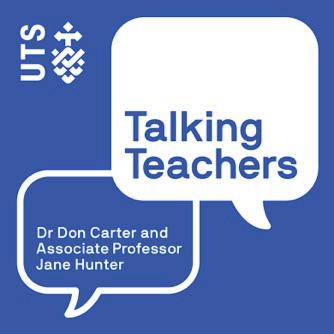

Hosts: Dr Don Carter and Associate Professor Jane Hunter, members of the Life-wide Learning and Education Research Group in the Faculty of Arts and Social Sciences at the University of Technology Sydney (UTS).
Audience: Anyone working/with an interest in the Australian education and teaching space
Link: www.uts.edu.au/about/faculty-artsand-social-sciences/podcasts/talkingteachers.
A podcast series offering new solutions and fresh perspectives on the current issues with education in Australian schools
that are not being covered by other media. Each series focuses on a different topic; for example, Series 1 revolved around key themes in education from different points of view within the system, such as via the Australian media, a union standpoint, a former NSW Education Minister, a retired school teacher, a school funding commentator, and an education researcher.
Leadership In Focus Hosts: Joanne Jarvis, Director, School Leadership Institute, NSW Department of Education

Audience: Leaders in Australian schools
Link: https://education.nsw.gov. au/teaching-and-learning/schoolleadership-institute/research/podcast.
This podcast shines a spotlight on school leaders and explores the key issues and challenges they face. They cover a variety of topics such as: relational trust, emotional intelligence, virtuous leadership, middle leadership, and collective teacher efficacy. They also provide a discussion guide with each episode, which includes discussion points with time stamps, and a reference list.

Hosts: Lisa Bryant, Dr Leanne Gibbs, and Liam McNicholas
Audience: Early childhood educators and those interested in the education of young children
Link: www.earlyeducationshow.com/ episodes.
Running since 2016, this is a fortnightly podcast looking at the policy, politics, and practice of Australia’s early childhood education sector. They analyse the news of the week, explore topics of professionalism and advocacy in-depth, and do interviews with some big names in the sector. Some podcast themes include: ‘Is social media good or bad for ECEC?’, ‘Expert insights from UOW Early Start’, ‘How do we advocate for free ECEC after COVID-19’, ‘Is too much expected of centre directors?’.
Hosts: Dan Bowen, Beth Worrall, Lee Hickin
Audience:
All teachers and school leaders.
Link: https://aipodcast.education. A fortnightly podcast about Artificial Intelligence in Education – what it is, how it works, and the different ways it is being used. It’s not too serious, or too technical, and is intended to be a good conversation of background information. Some episode titles include: ‘Hacking for good: ideas and tips’, ‘Music, Creativity, and Minecraft’, ‘Is AI creative?’
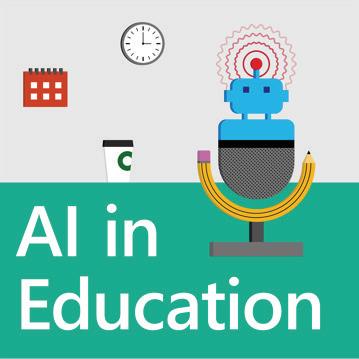
Host: Ceri Stanford
Audience: Every preservice, current and retired teacher
Link: https://podcasts.apple.com/au/ podcast/wine-with-teacher-podcast/ id1496094651.
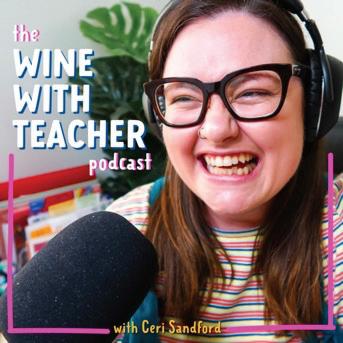
A fortnightly podcast with a casual and humorous tone. Ceri explores a variety of topics from ‘finding your forever schools’ to ‘what makes a good teacher’. While a more relaxed listen,
there are plenty of nuggets of wisdom scattered throughout, alongside reassurance and positive strategies you can employ in the classroom.
Teacher Takeaway
Hosts: Aaron Johnston, Alice Vigors, Rebecca West and James Gray
Audience: All educators
Link: https://teachertakeawaypodcast. weebly.com
This podcast is hosted by four Australian teachers and school leaders. With a wealth of industry knowledge and expertise, they bring all the elements of effective pedagogical practice to the fore in a light-hearted way. They aim to provide educators with practical takeaway ideas to implement in their classroom or school setting. Some topics covered include: ‘Creating culturally inclusive schools’, ‘10 tips for beginning teachers’, and ‘Remote outback teaching’.
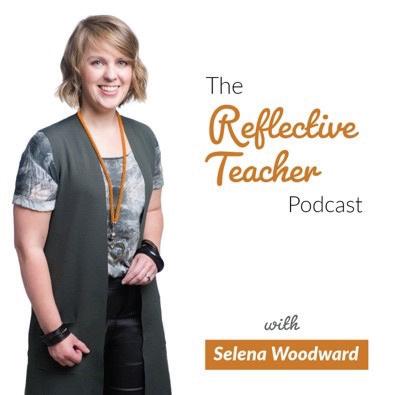
Host: Selena Woodward
Audience: All classroom teachers
Link: https:// edufolios. org/podcast.
This podcast comes thick and fast, with over 150 episodes available on a range of topics such as ‘Empowering neurodiverse educators’ ‘Is Chat GPT the ultimate teacher’s assistant?’, ‘Giving feedback that feels good’, and ‘Five ways to engage parents and carers in learning’. In addition to great stories and insights, each episode is designed to help you take immediate action with supporting steps, strategies and advice for growing your practice and meeting your admin requirements in one go.
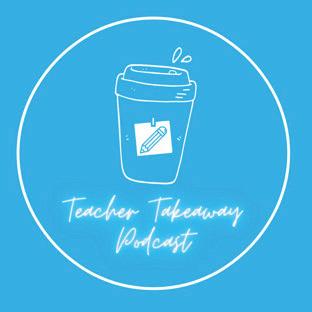
Teacher Wellbeing
Host: Ellen
Ronalds
Keene
Audience: All educators
Link: www. pod.link/ teacherwellbeing
With a spike in career burnout, anxiety and reports of mental health issues, this podcast is looking to inspire educators across the nation to take back control of their health and happiness. Promoting the message of “happy, healthy
people being more effective teachers and productive members of society,” these episodes feature real teachers telling real stories of health/wellbeing challenges and successes.
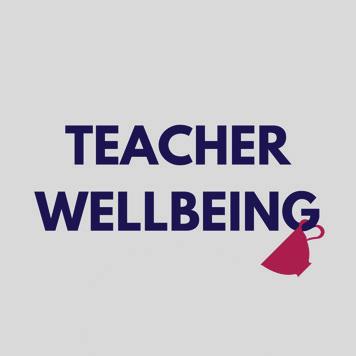

Host: Australian Council for Educational Research
Audience: All teachers, principals, and support staff
Link: www.teachermagazine.com/au_ en/category/audio
The Australian Council for Educational Research (ACER), a notfor-profit organisation, independent of government and education systems, publish this podcast to help teachers, principals and school staff improve their skills and practices using evidence-based approaches. Episode topics include: ‘Empowering young people to prevent e-cigarette use’, ‘Student agency in school transition’, and ‘Improving students’ financial education’.

Hosts: Cameron Malcher (English and Drama teacher), plus guest teachers
Audience: Classroom teachers
Link: https://terpodcast.com
This podcast explores issues and practices in education from the perspective of classroom teachers. They explore the implications of educational policies, teaching practices, and international events that impact on teaching and learning in Australian classrooms. Episode topics include: ‘Multiculturalism and refugees in schools’, ‘Neuroscience and school leadership’, and ‘Teacher workforce and shortages’.


30 years
Super is one of your biggest investments so it’s important to choose a fund that gives you confidence. NGS Super has been helping education professionals with their super for over 30 years. We understand everyone is different when it comes to saving and their plans for tomorrow. That’s why the things that matter to you — value for money, quality service and sustainable investments — matter to us too. Start planning for your tomorrow.